Leather Owl Mask
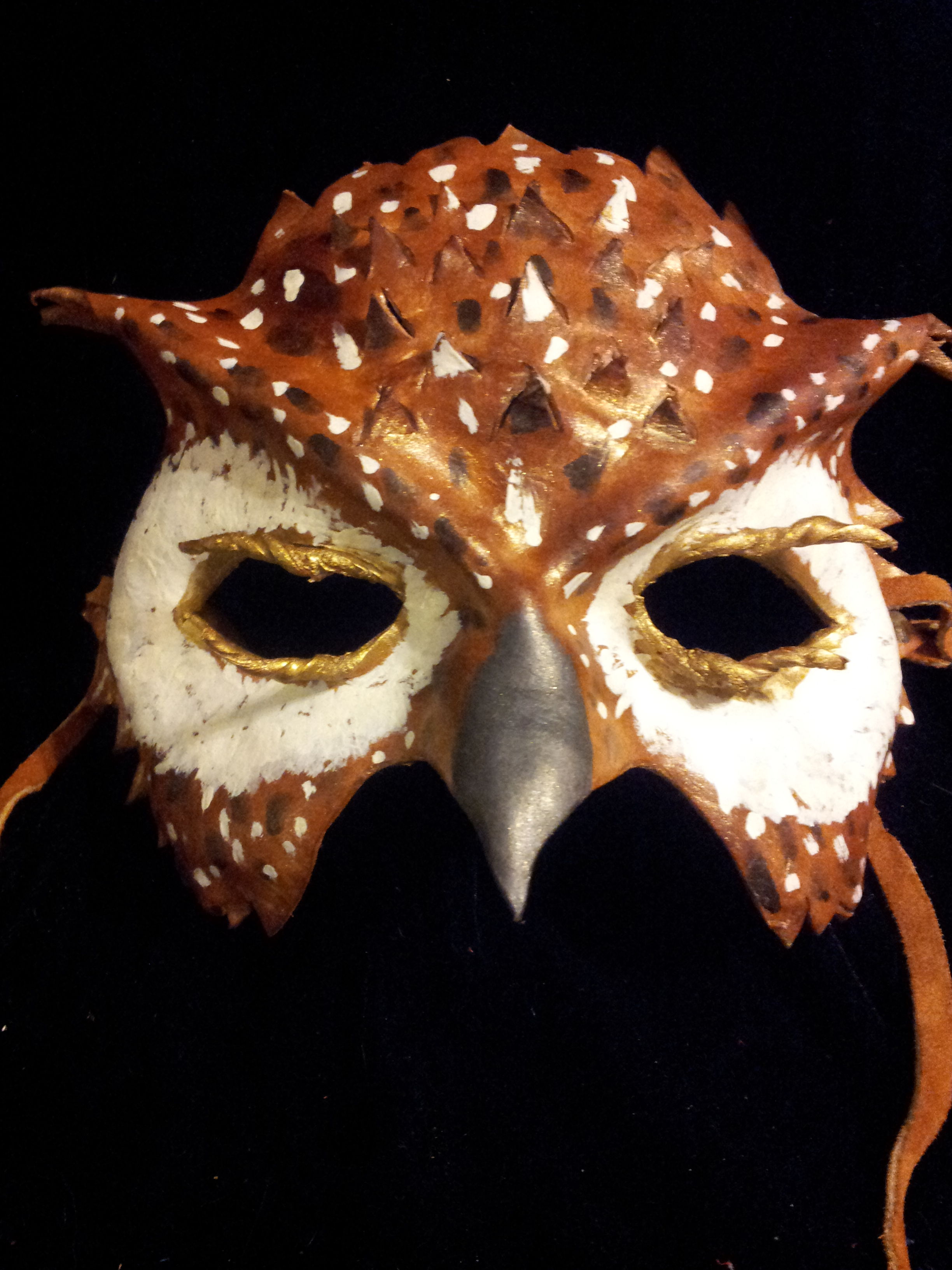
People have been asking me for an owl mask for a while. I figured this Instructable would not only give me an excuse to finally build the prototype mask, but it would also give me a chance to do a full Instructable on leather mask making.
Making a leather mask utilizes a process called "wet molding" that takes advantage of a specific property of vegetable tanned leather. Tanning is the method of preserving leather, and different tanning chemicals give leather different properties. Vegetable tanned leather is the stiffer, thicker, and harder leather often used in belts and sheaths. However, when vegetable tanned leather gets wet, it gets soft and mold-able. Once it dries, it holds its shape.
Many different cultures have used the wet molding process to produce masks for entertainment and ceremony. One of the most well known of these being the Italian opera masks of the Renaissance period. By crafting leather masks in this way, you are carrying on a tradition that spans the centuries and reaches though many cultures.
Getting Started
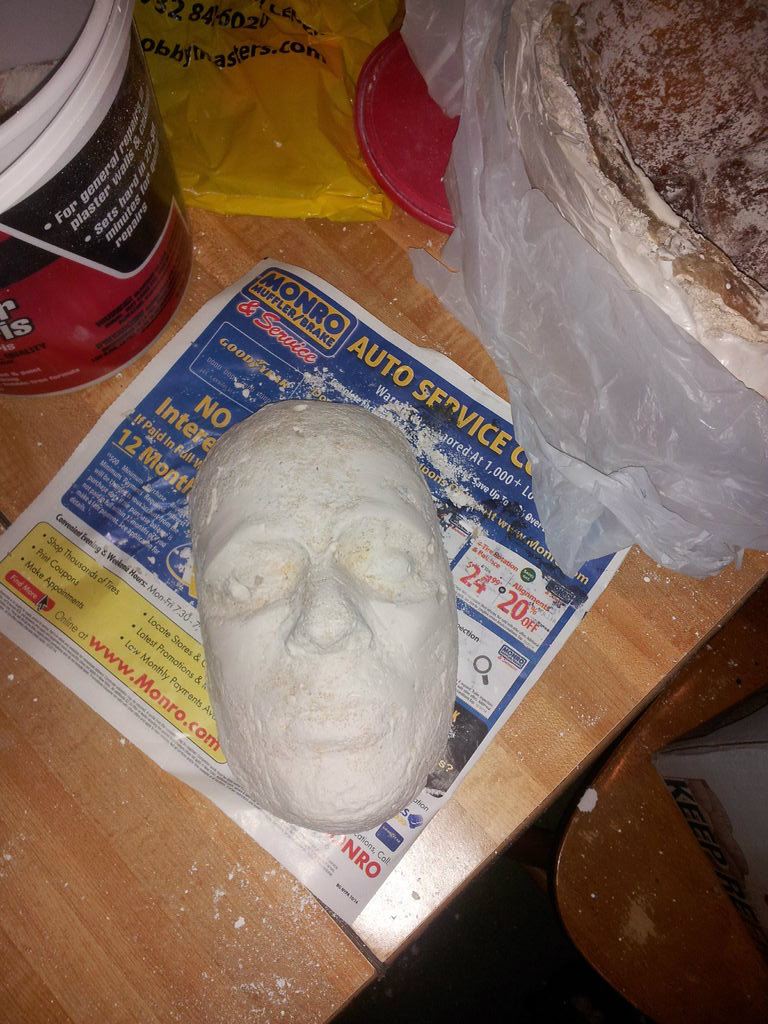
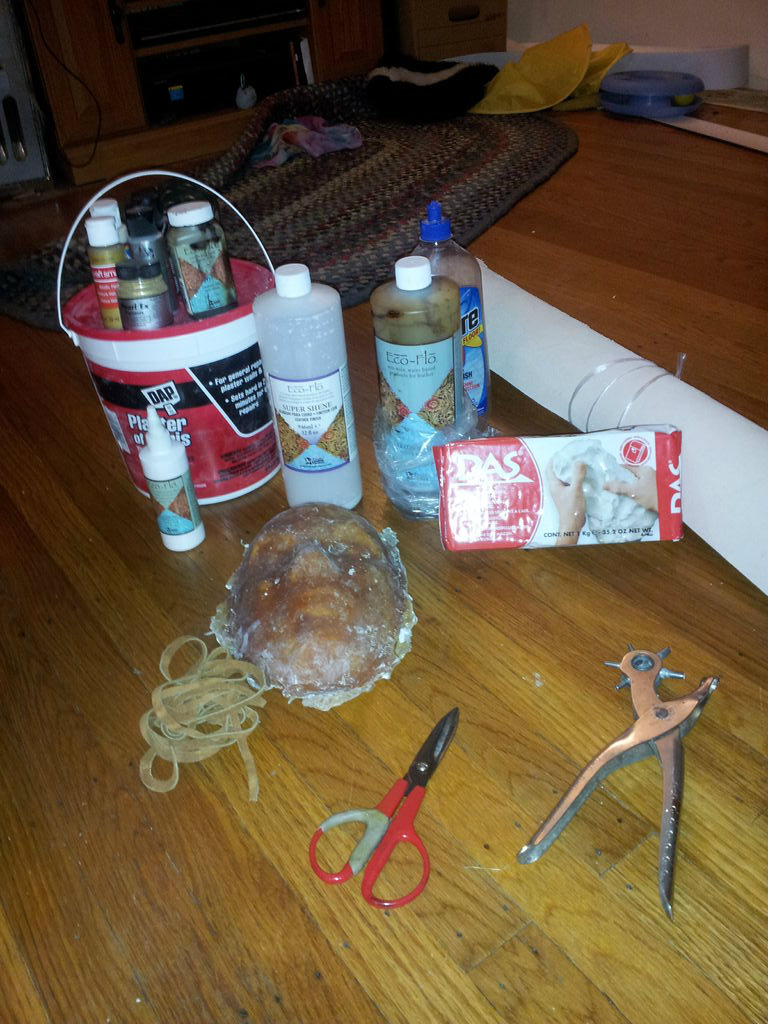
First you will need to make a face mold. I normally would walk you though that process myself, but I've grown out my beard and facial hair makes the life casting process a bit messy. I have looked and found a few instructables that you can check out on the life casting process.
https://www.instructables.com/id/How-To-Cast-a-Face...
https://www.instructables.com/id/Plaster-Face-Cast/
When you make the face cast, do not seal it. You will begin by working with the unsealed plaster mold.
After you have your face mold, you will need the following tools and materials:
Das white modeling clay (I have used other clays, but the Das clay works the best in my experience)
5-6 oz vegetable tanned leather (5-6 oz leather is 5/63"-3/32" thick)
a piece of scrap leather
leather dye (I used the timber brown and bison brown from Tandy's Eco-Flo line)
acrylic paint
Gold Pearl Ex powder (optional)
leather sealant (I use Tandy's Eco-Flo Super Shene)
Glue (I use Tandy's Eco-Flo Leather Weld)
Floor wax or acrylic sealant
2 lengths of 15-20"" leather lace
leather shears/good scissors
hole punch
x-acto knife
cutting board
a sheet of card stock
a pencil
a sharpie
paint brushes, sponges, paper towels, an old sock
Make Your Mask Mold
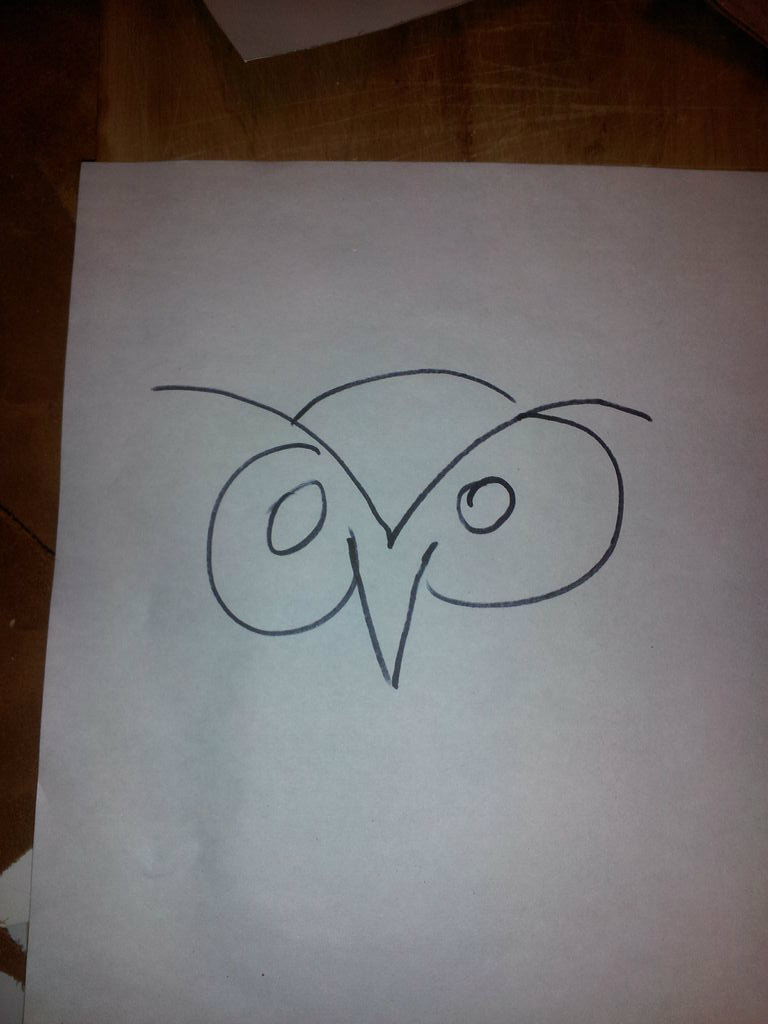
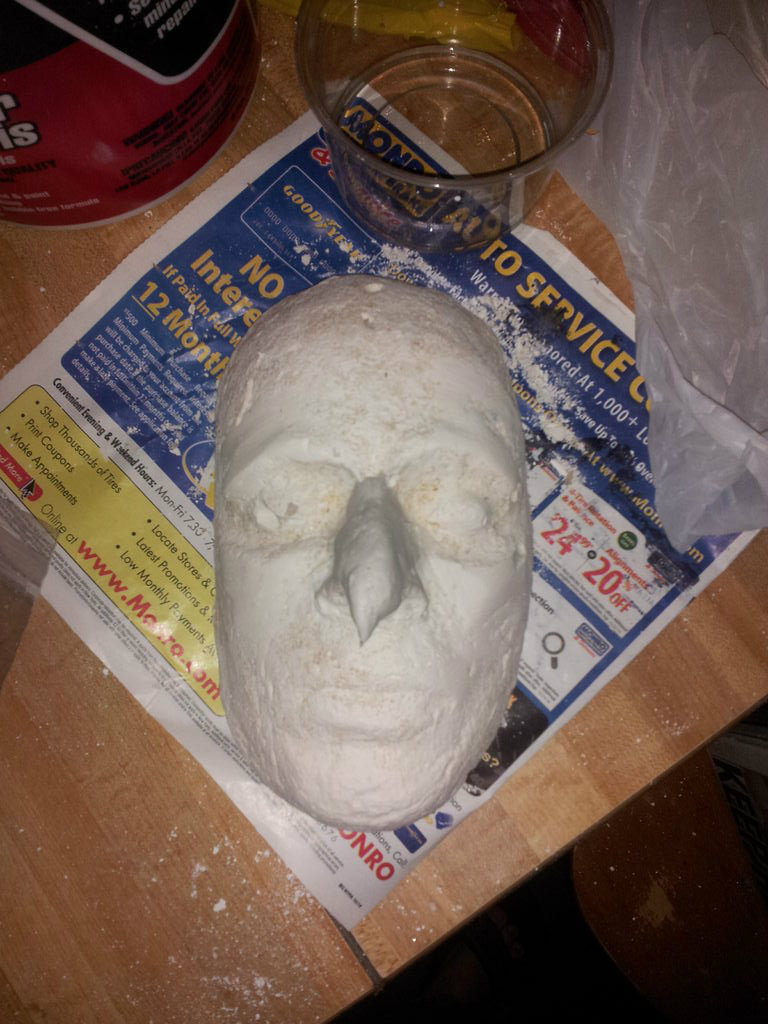
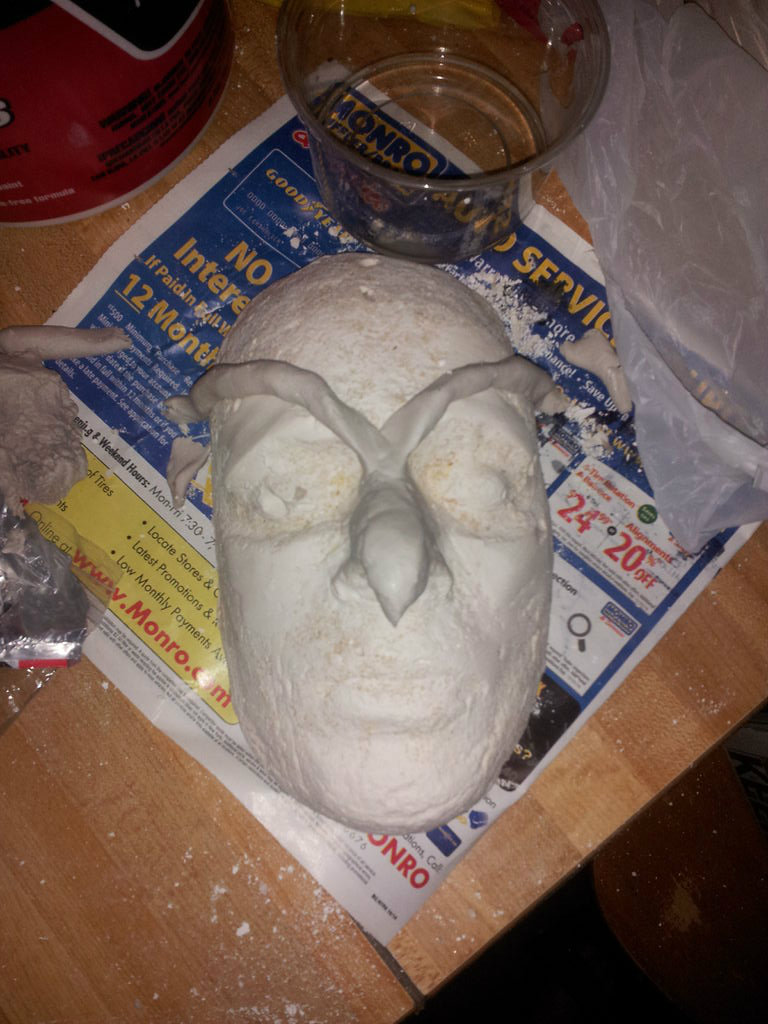
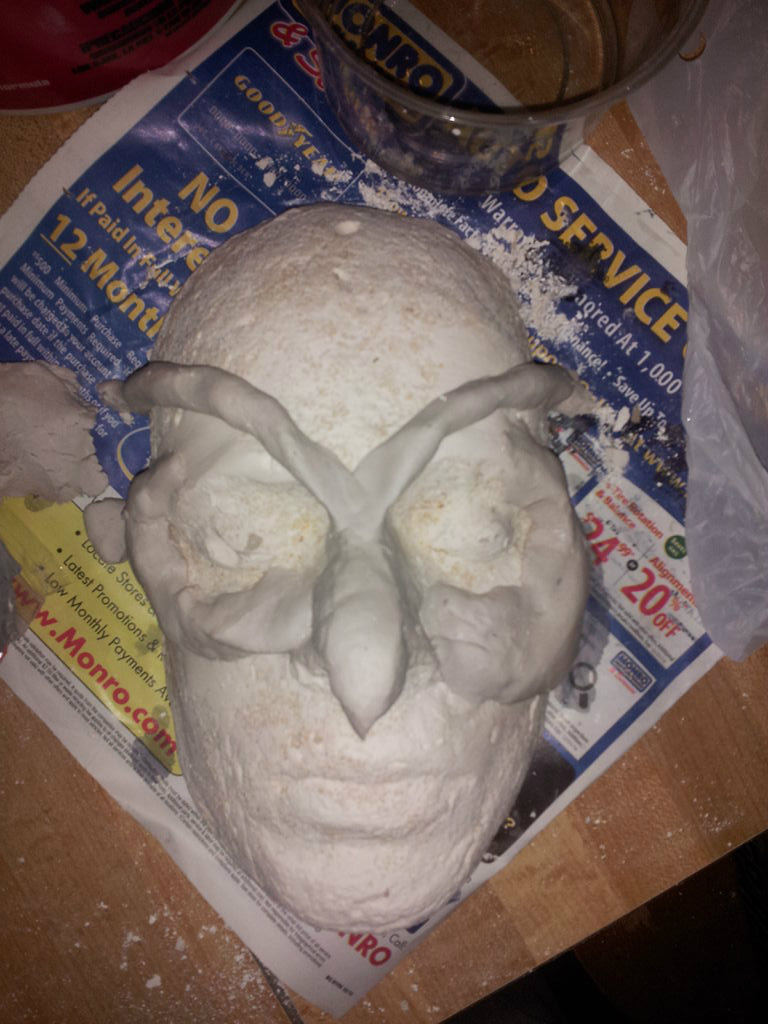
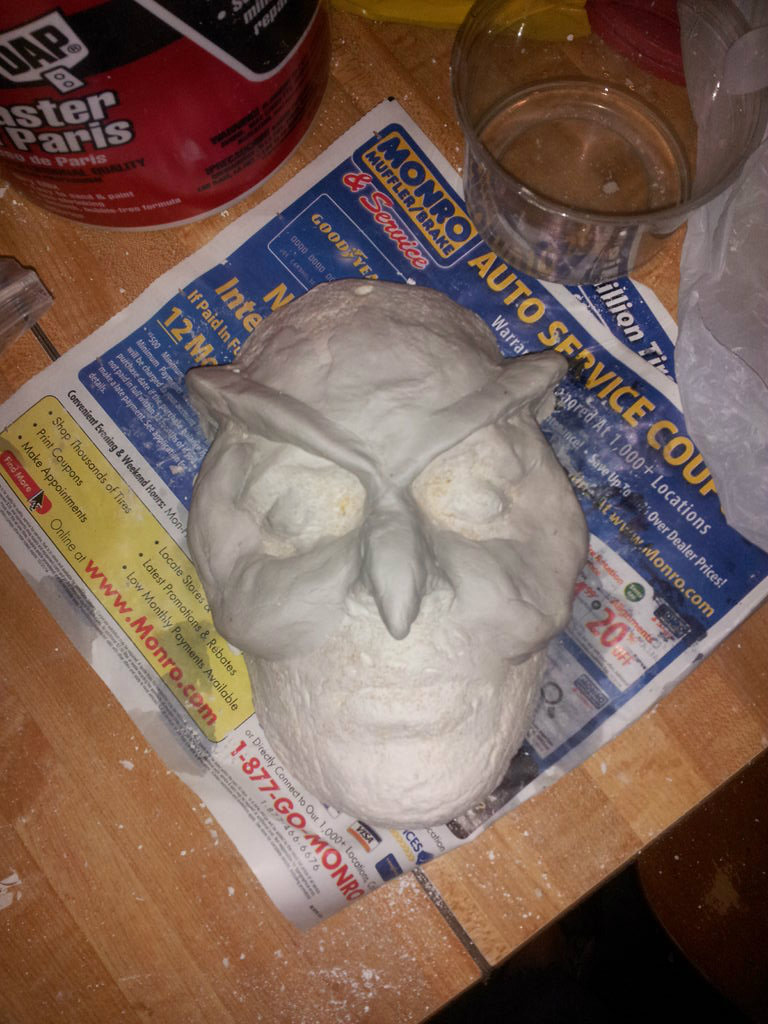
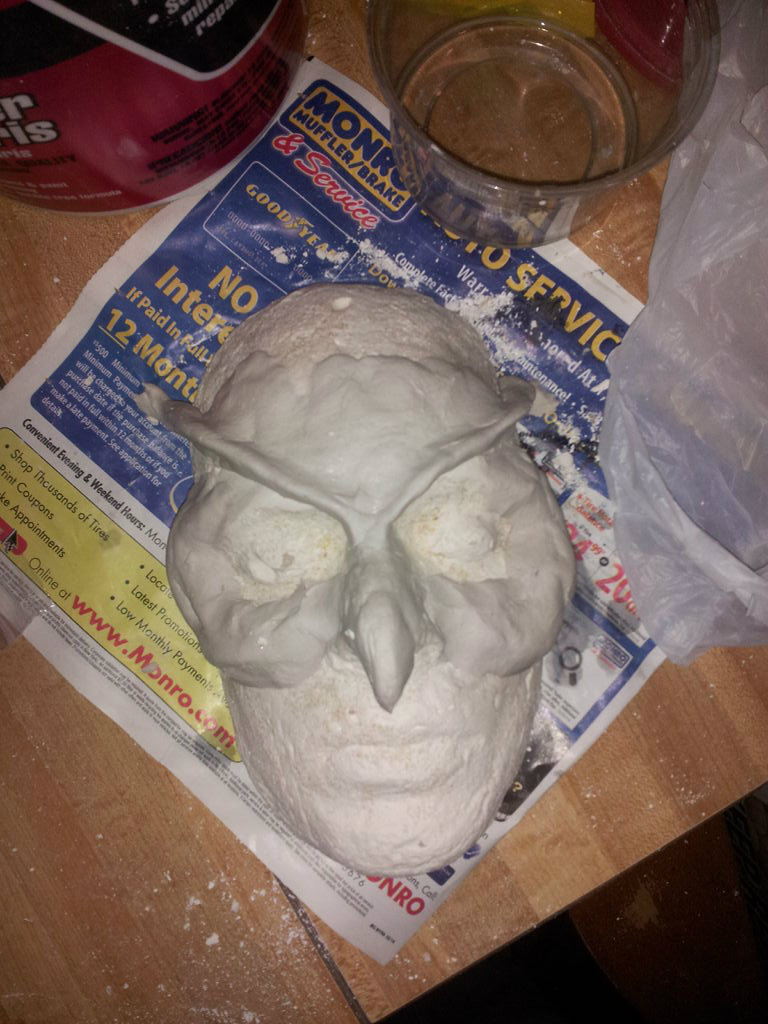
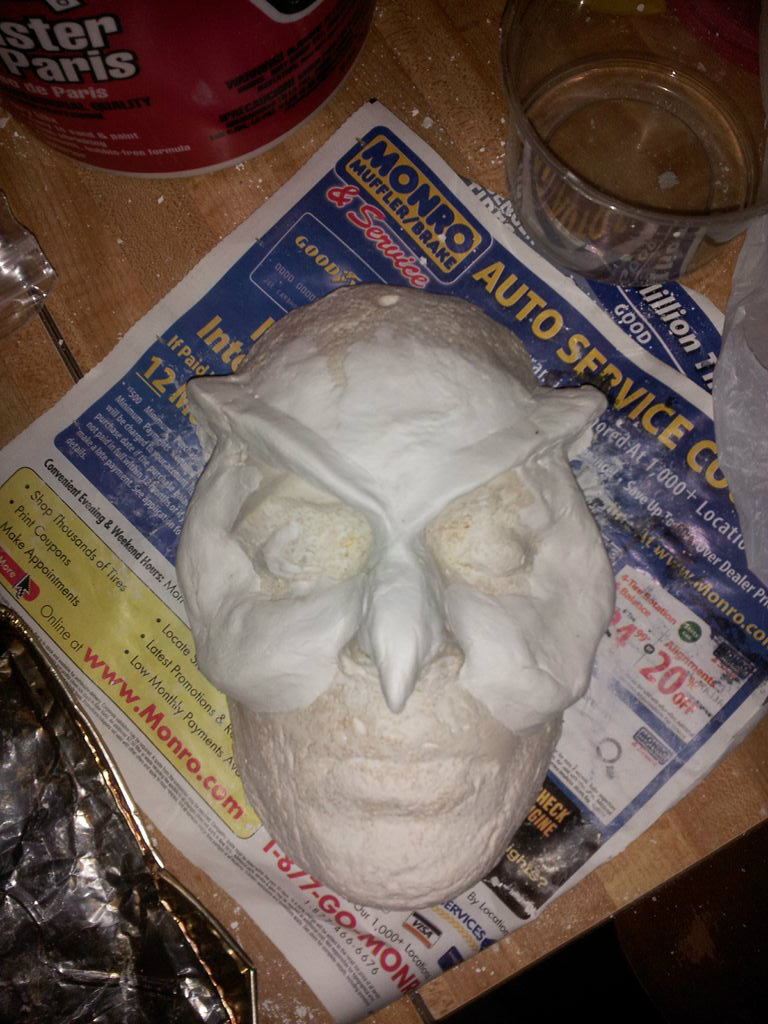
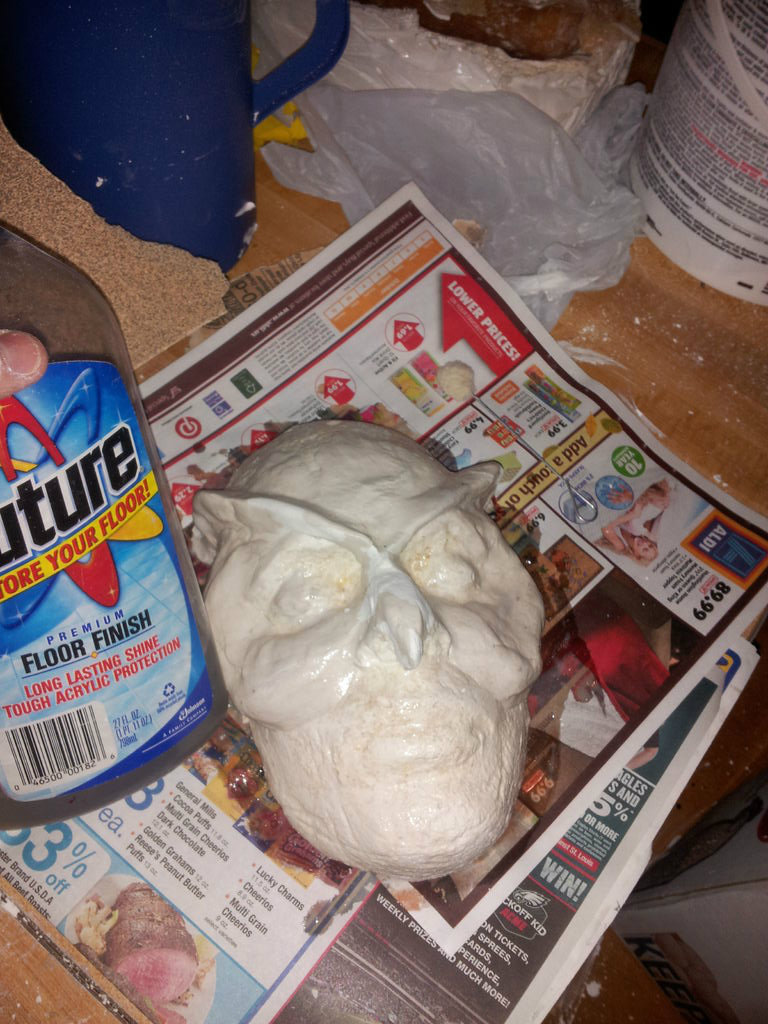
Your mask mold serves as the base upon which you will sculpt your mask.
To start, you want to identify the key features of the animal or creature that will be the subject of your mask. Since this is the base structure, you only need the basic features that defines your subject, fine detail will be wasted. In the case of the owl, the basic features for "owlness" are the beak, the brow, and the face discs.
Once you know what features to build, start applying the Das clay to build up the face cast. It is often useful to wet the unsealed plaster to get clay to stick better. Sculpt on the beak, the brow, and round out the cheeks. I really reinforced the edges of the brow, because it will be worked with so heavily
After you are done, let the clay dry. If any parts fall off, you can glue them back on with Elmer's glue, though, that is usually not a problem. After the clay has dried, seal the mold. I used the floor wax, but any good acrylic sealant will do.
Make Your Rough Draft
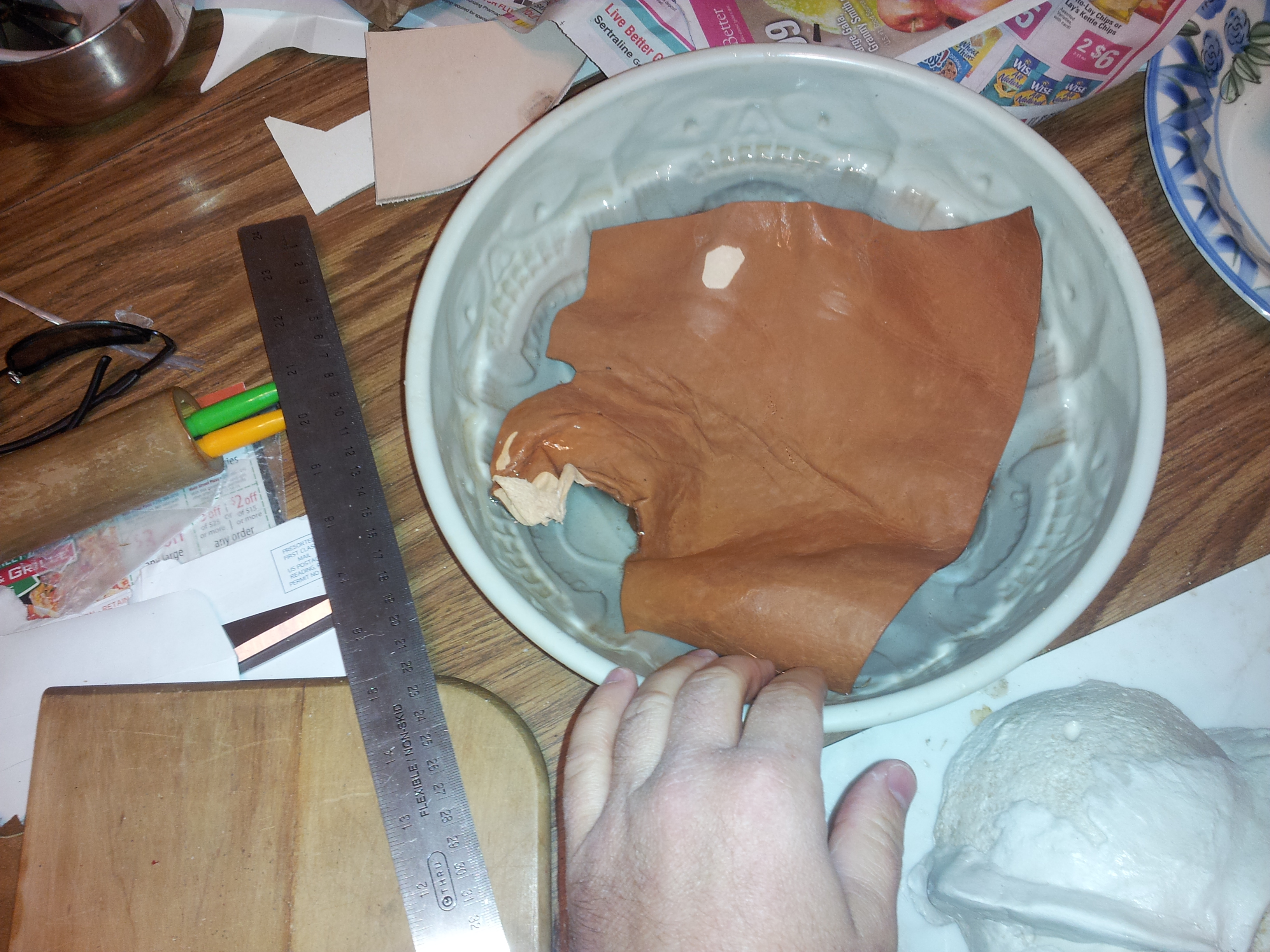
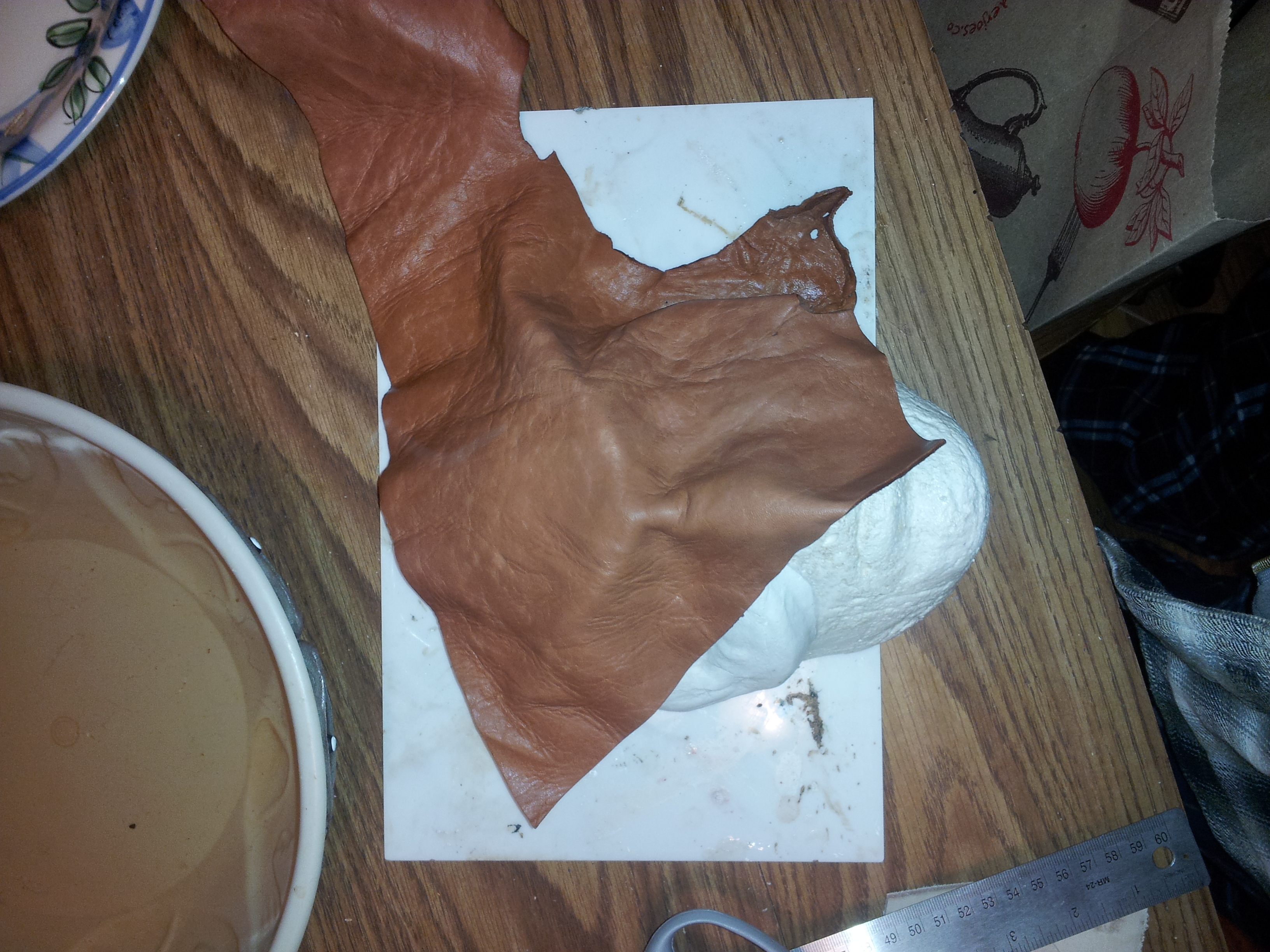
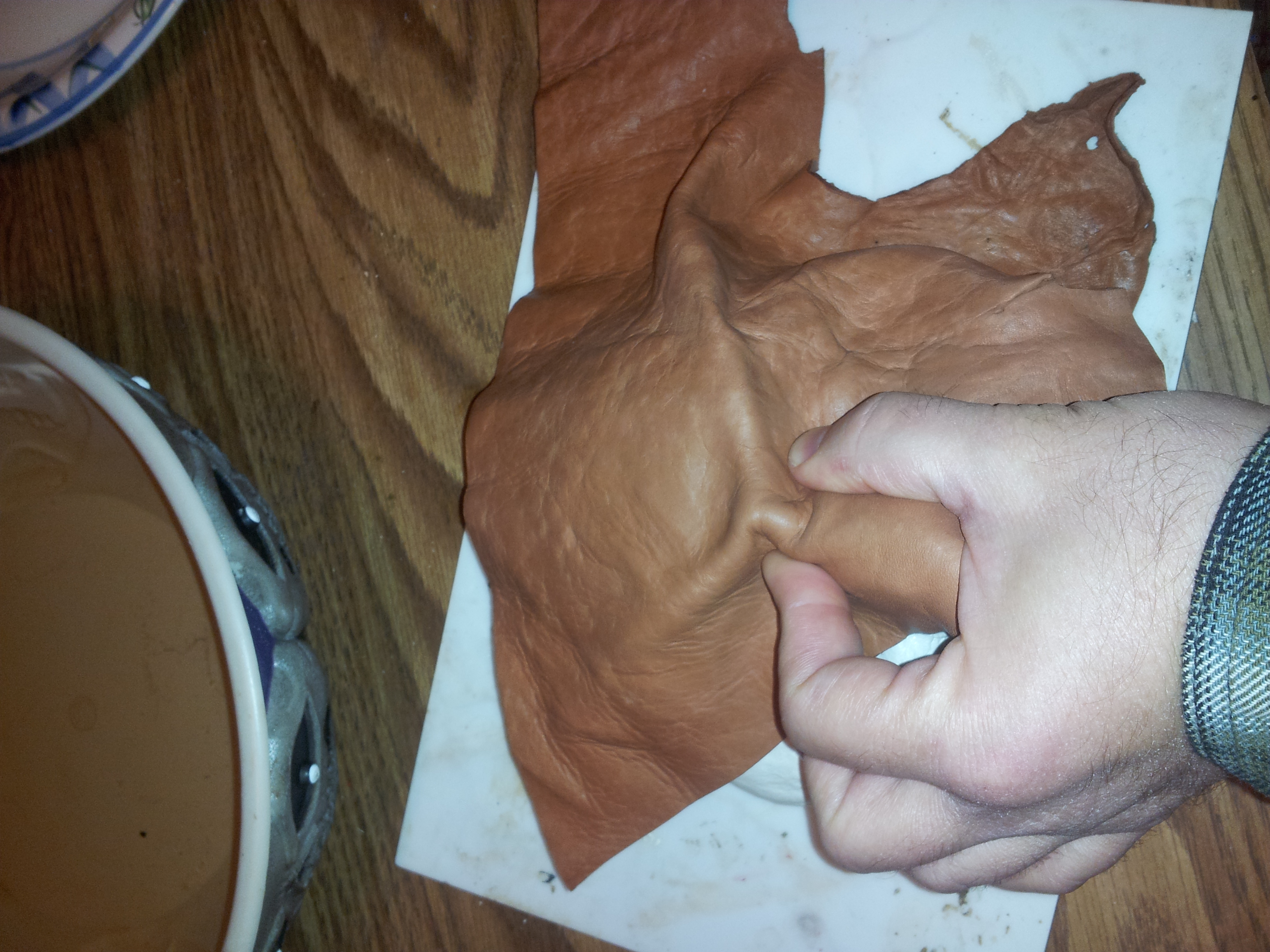
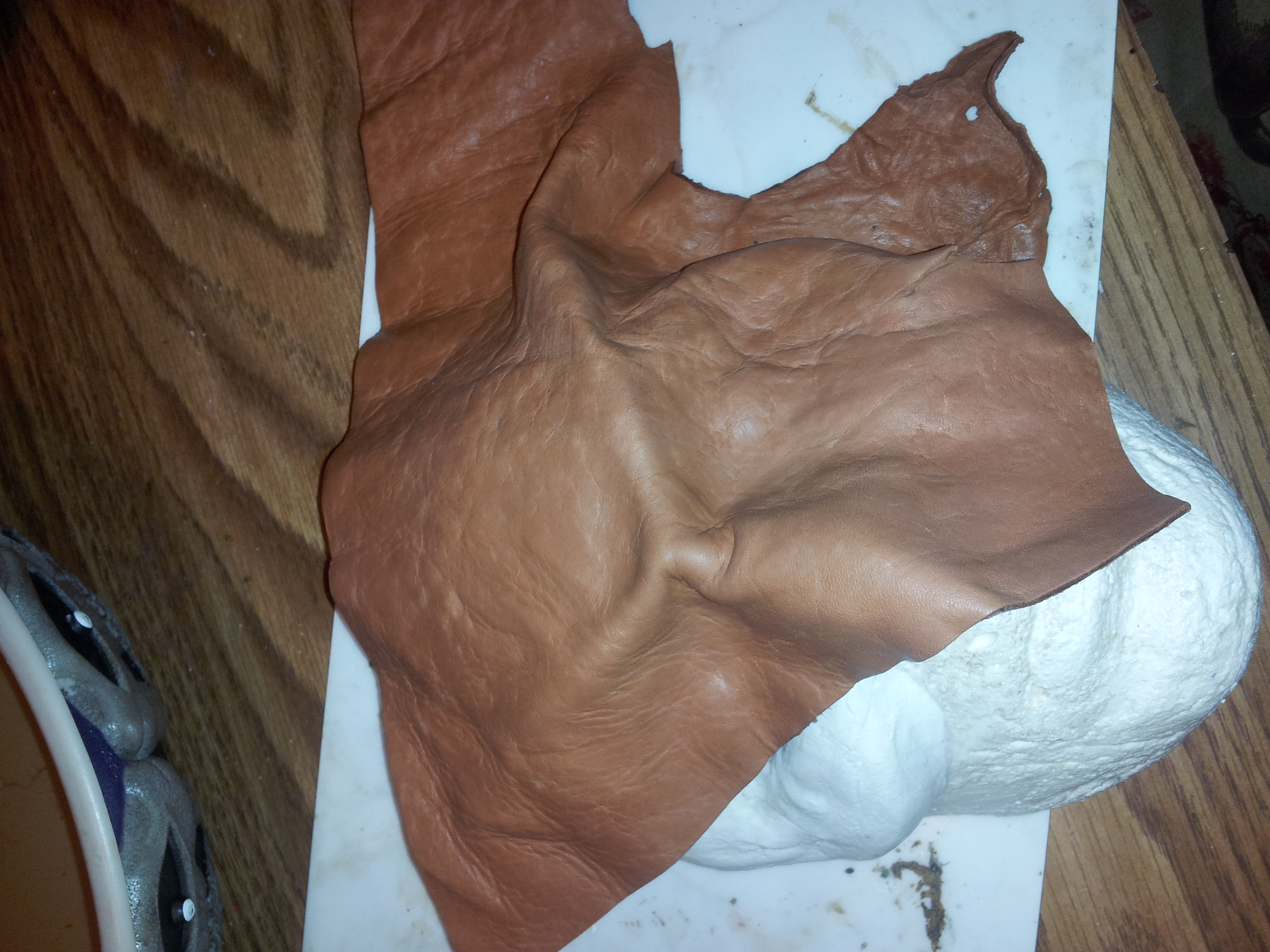
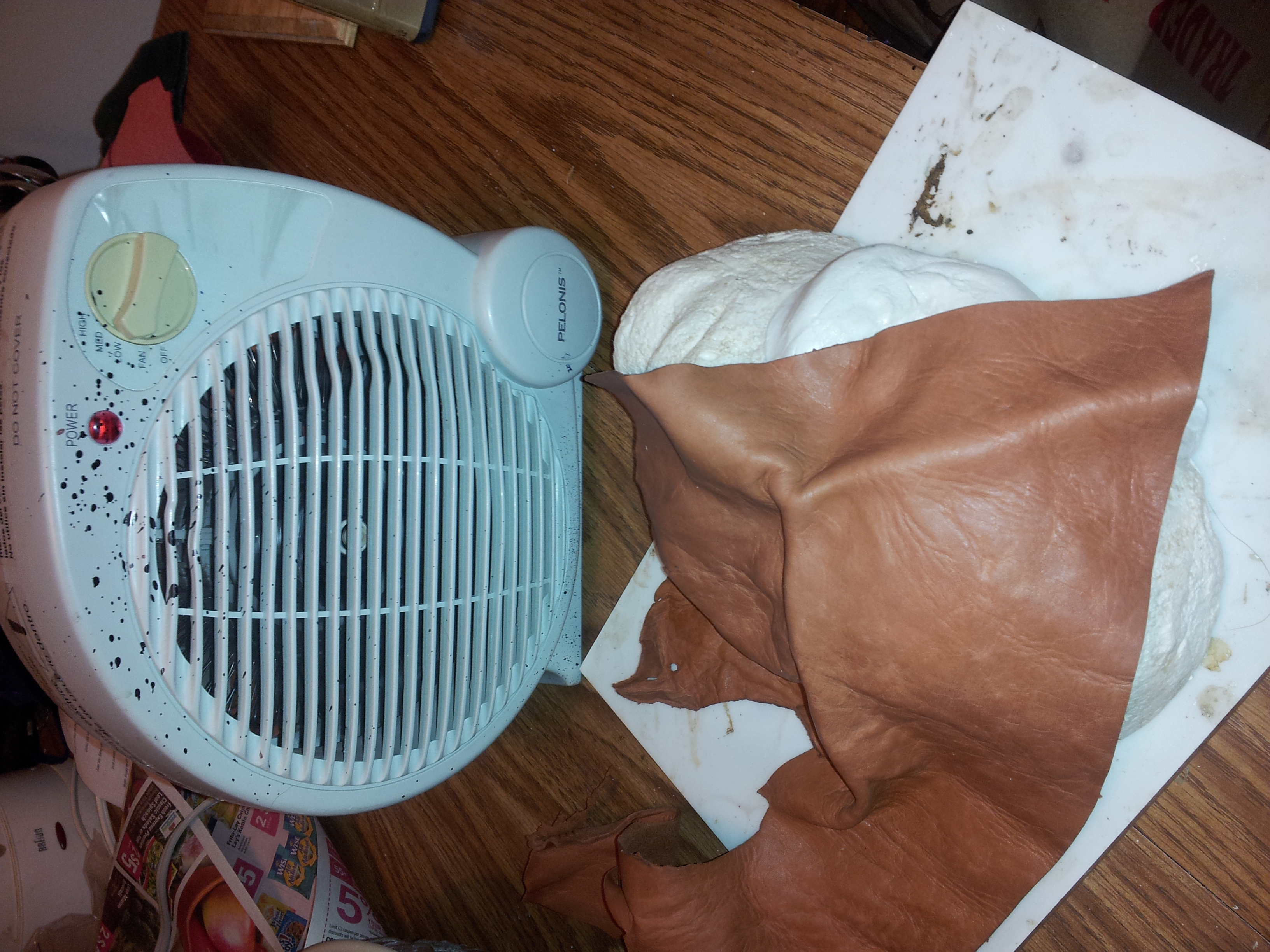
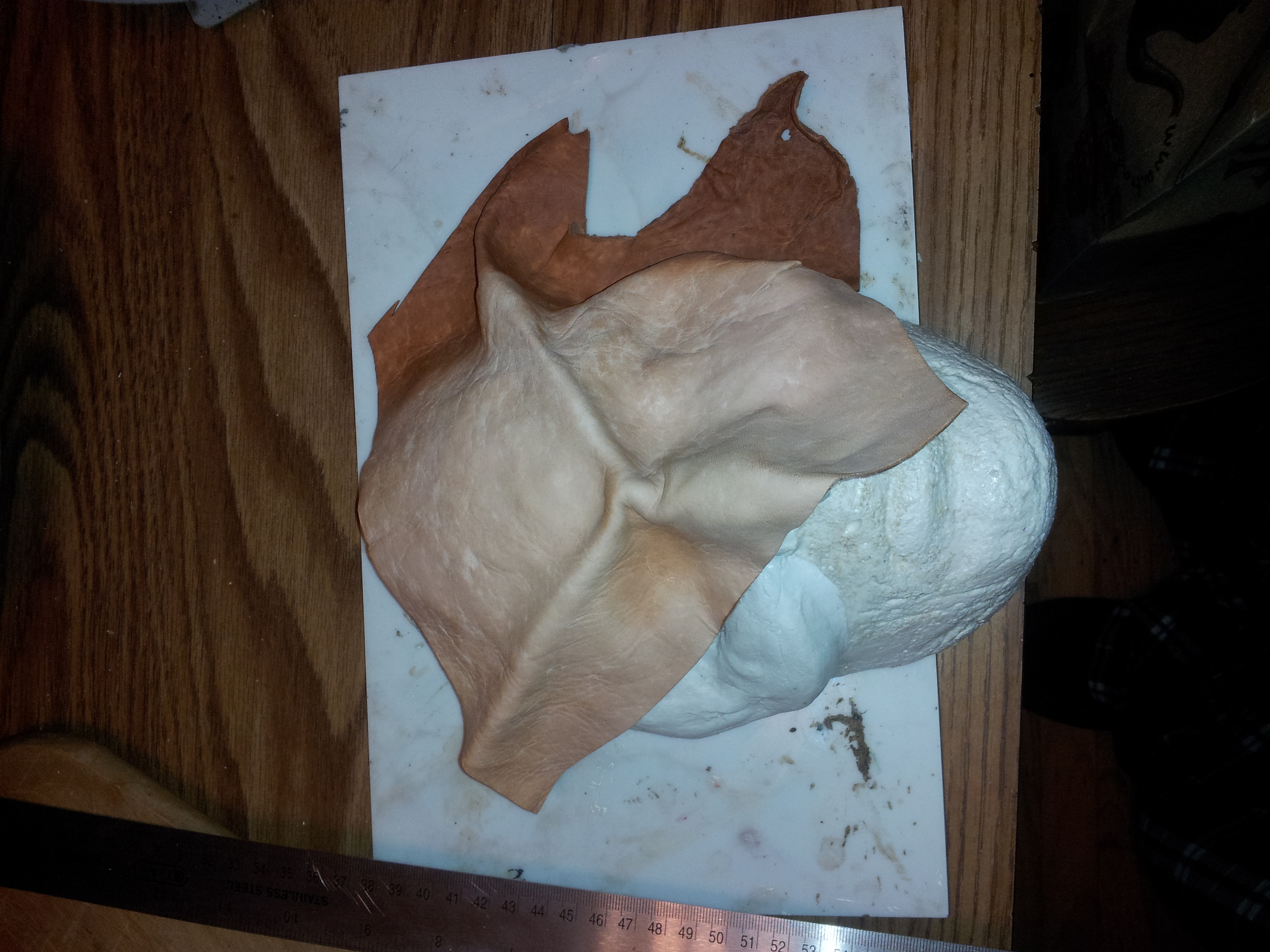
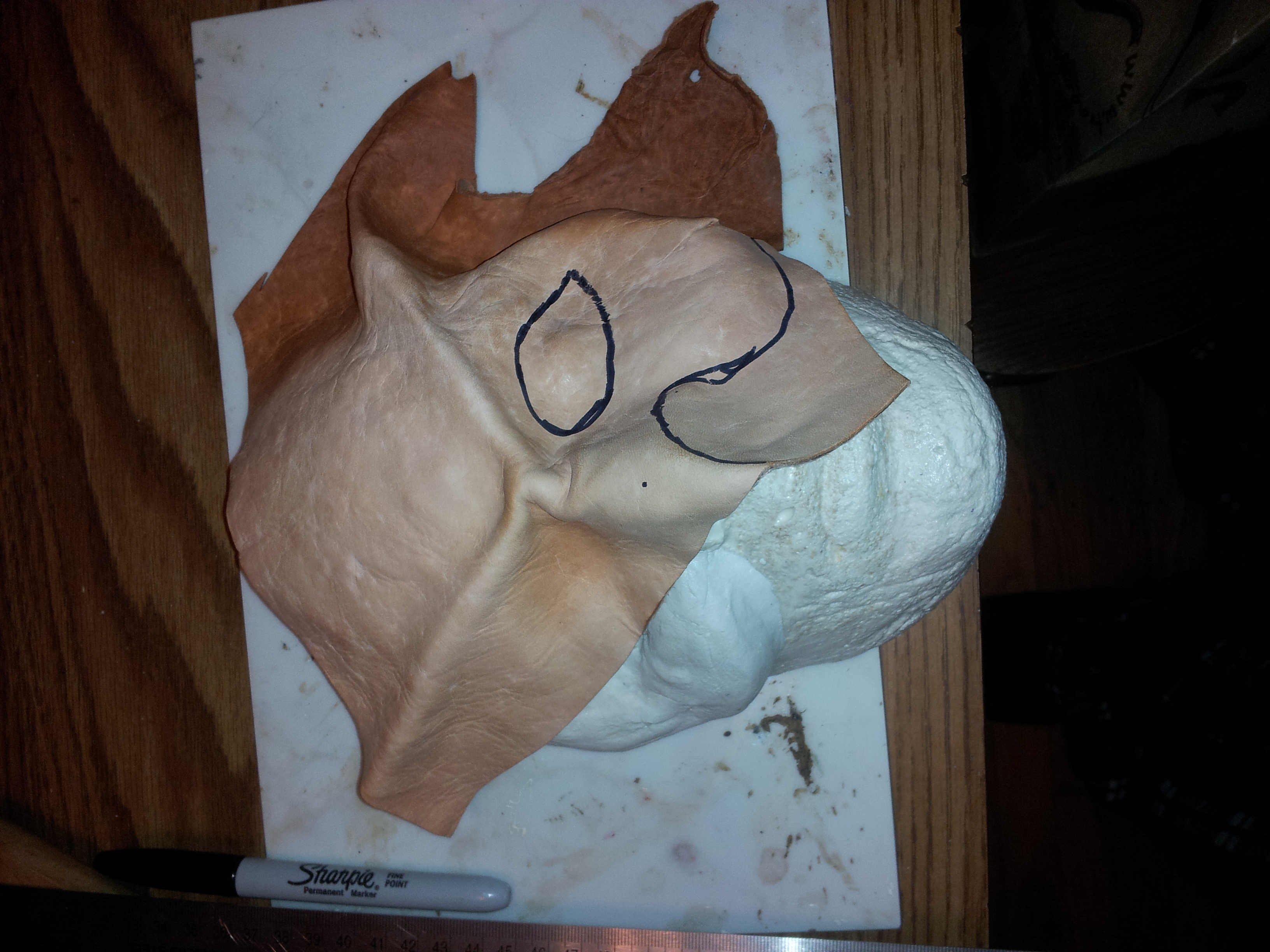
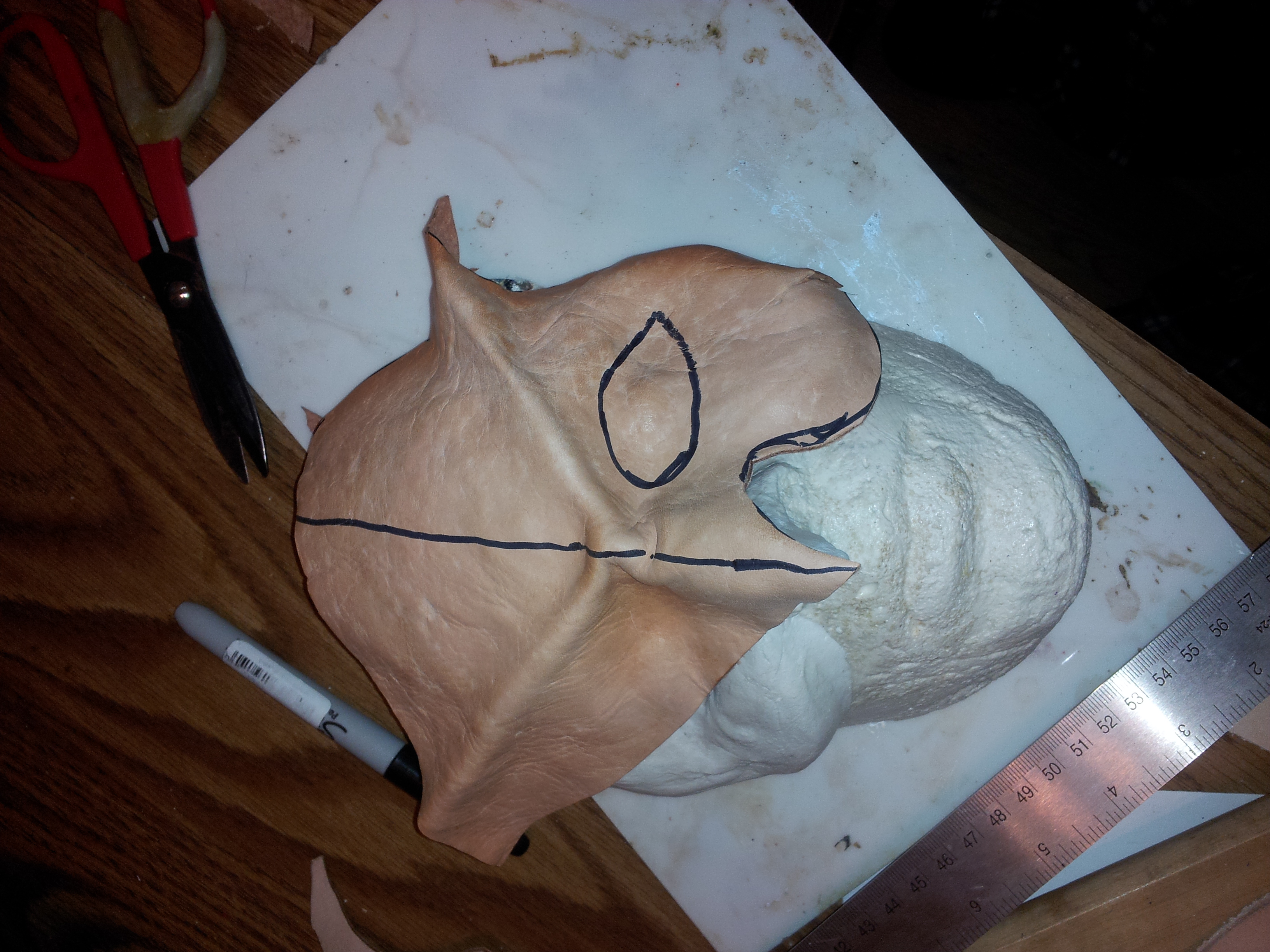
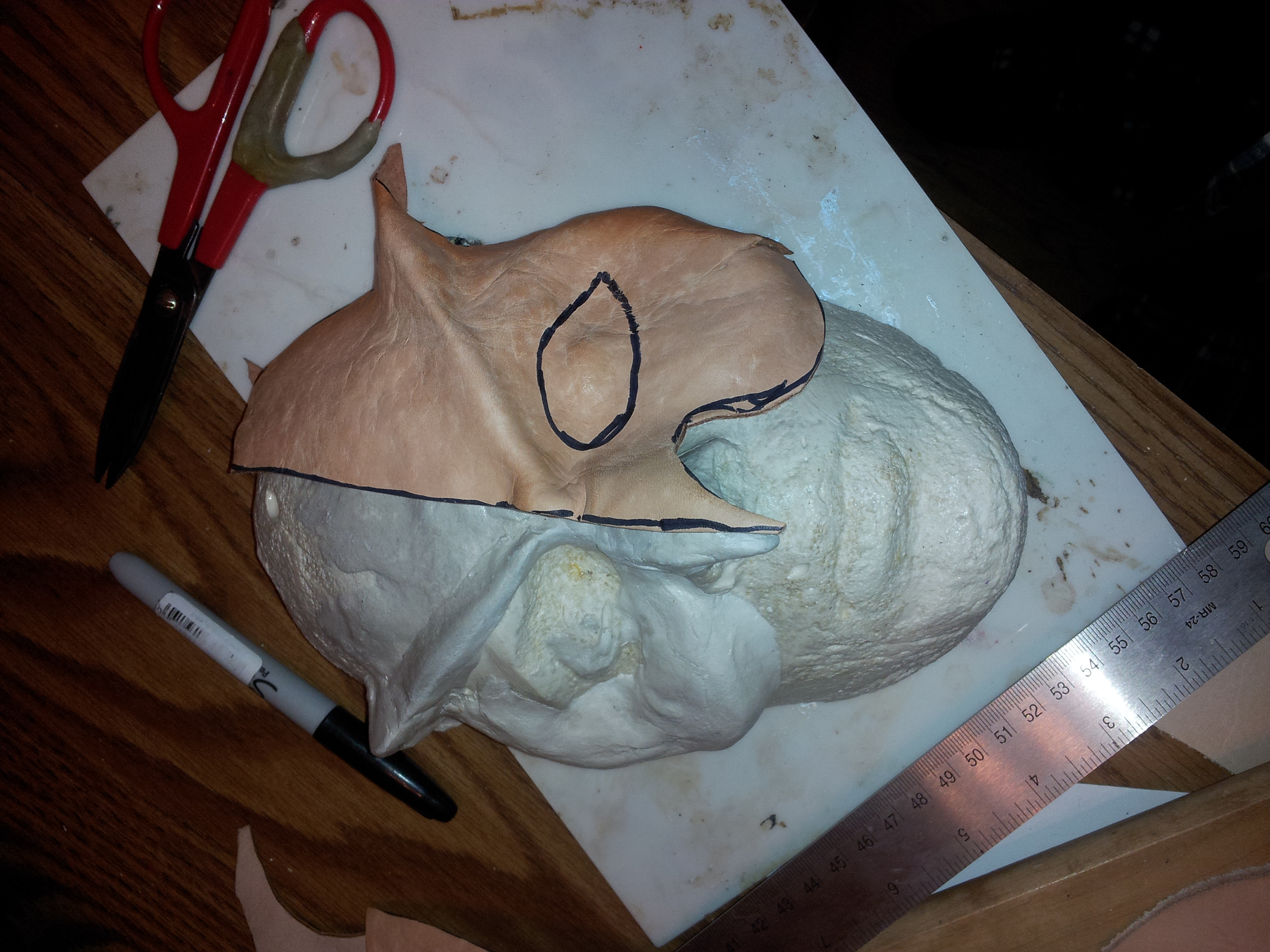
Many people skip this step, but I find that it is useful to make a rough draft and use that to build the template
Soak a scrap piece of vegetable tanned leather in warm water. The piece only needs to be large enough to cover just over half the mold, though covering the whole mold is best.
Wring out the leather, and place it over your mold.
Sculpt the leather around the mold by pinching, pressing, and folding it around the features your built up. The wetter the leather is, the more flexible it is, but the less it will retain its shape. Because of this, you will have to sculpt a bit, let it dry, sculpt some more, and repeat. You can speed up the drying process with a hair dryer or a portable heater with a fan.
Once the scrap leather has dried and is holding its shape, use the marker to draw the eye hole and to mark off where you want to cut off the excess to define the mask better. Then draw a center line and cut down the center line. this will help you create a symmetrical template.
Make Your Template and Cut Out the Leather for Your Mask
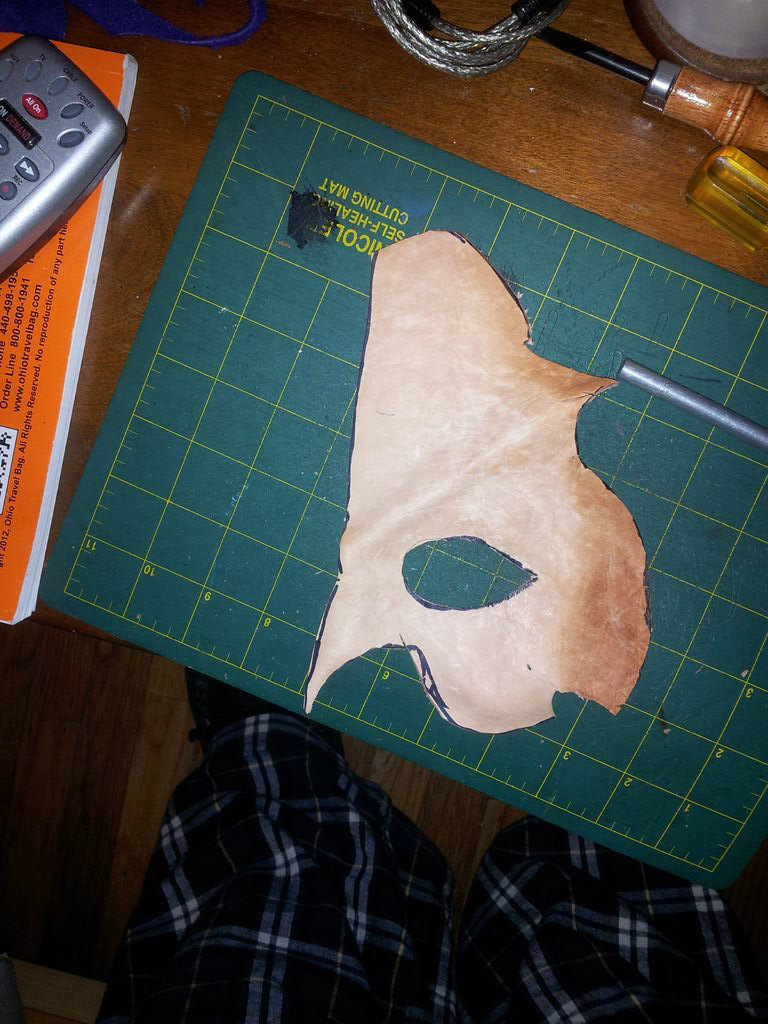

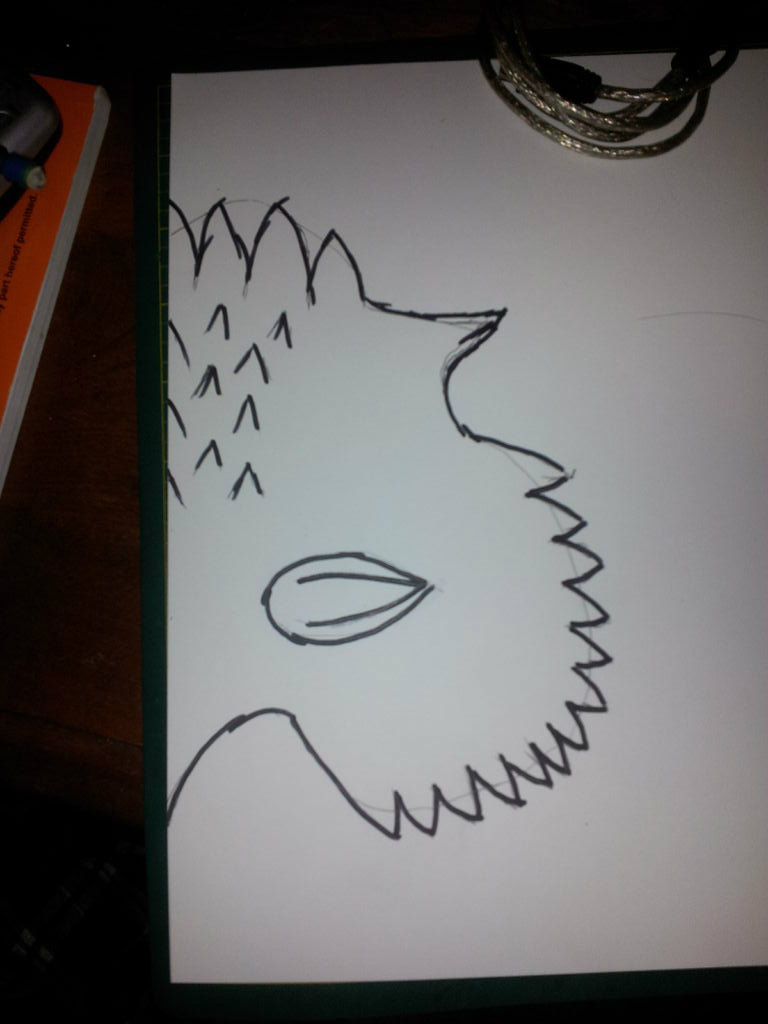
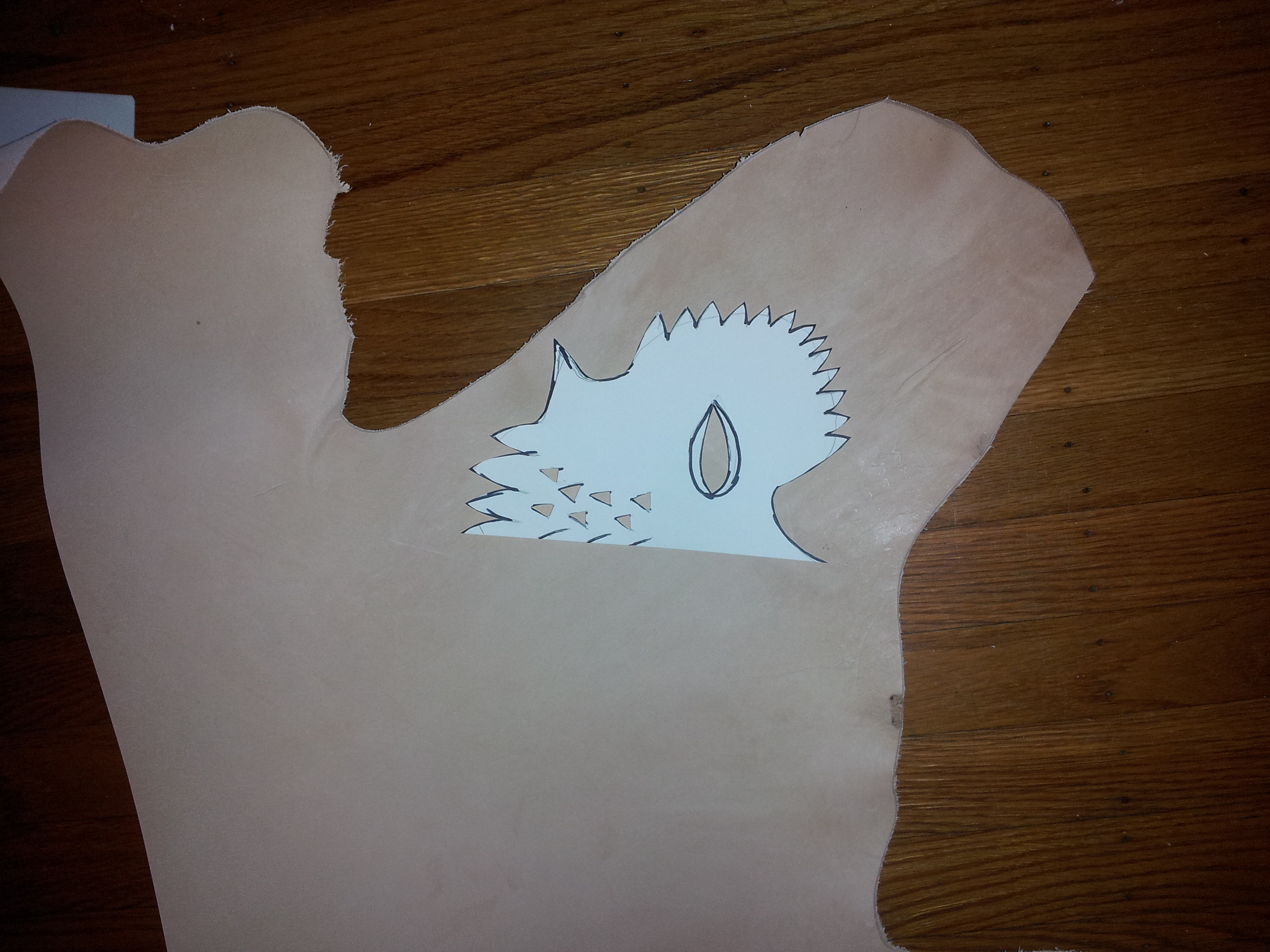
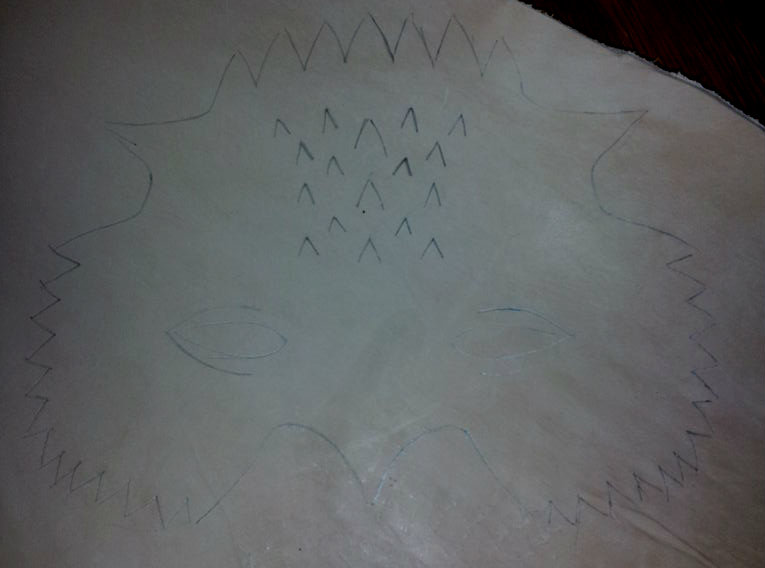
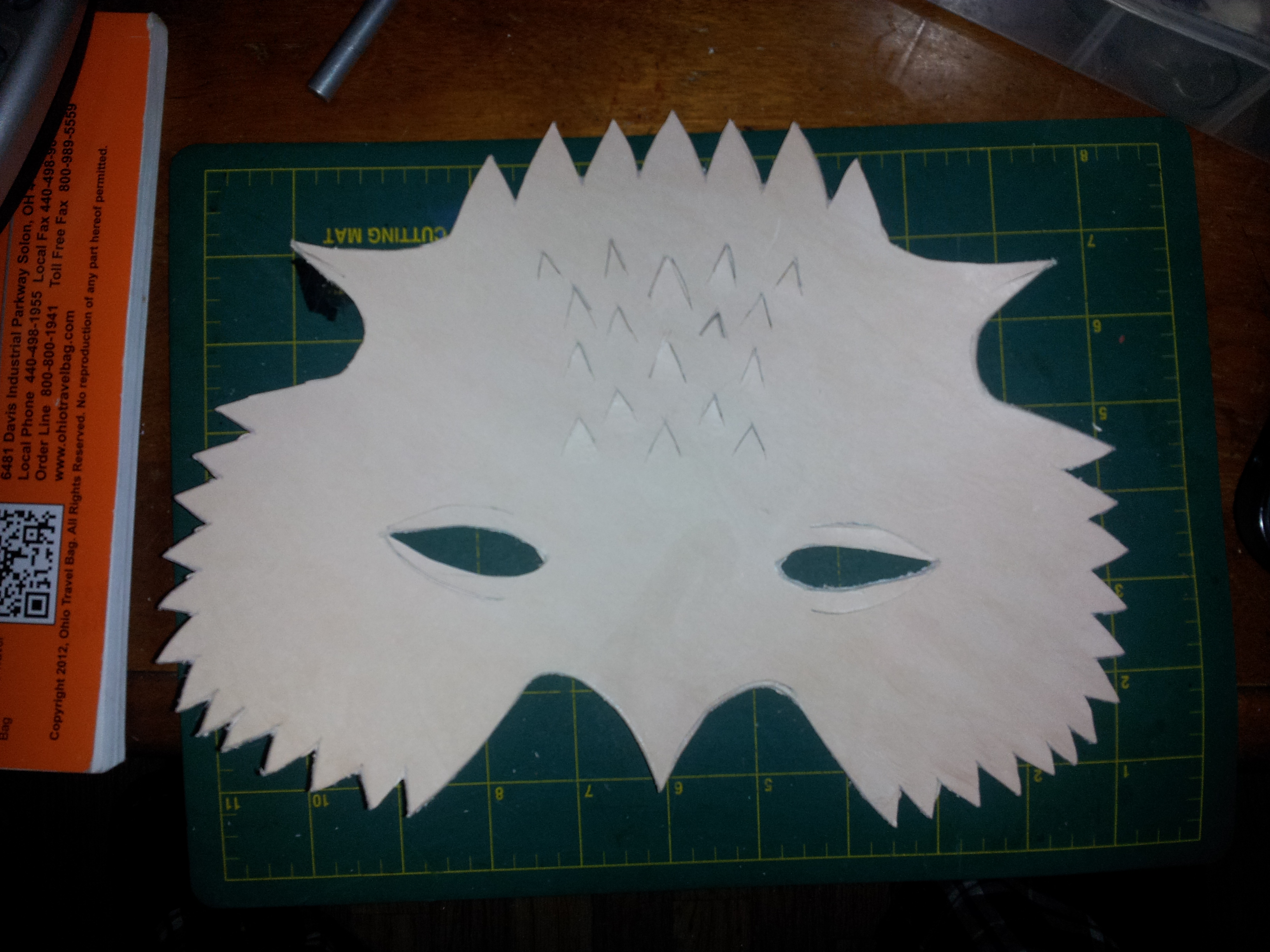
Flatten out the scrap leather half mask and cut out the eye hole.
Place the half mask on the card stock and trace around it. I usually line up the edge of the center line with the edge of the paper to give the template a cleaner edge.
Once you trace the half mask, you can add additional features. For the owl mask, I've added a feather like edge, and modified the eye design to produce eye lashes.
Trace the template onto the 5-6 oz leather. Trace the template on one side and then flip it to create a symmetrical outline for your mask. Do not trace the center line or else you will have an indented line down the center of the mask
Finish by cutting out the mask using the leather shears and finishing the fine detail cuts with the x-acto knife.
.
Sculpt the Mask
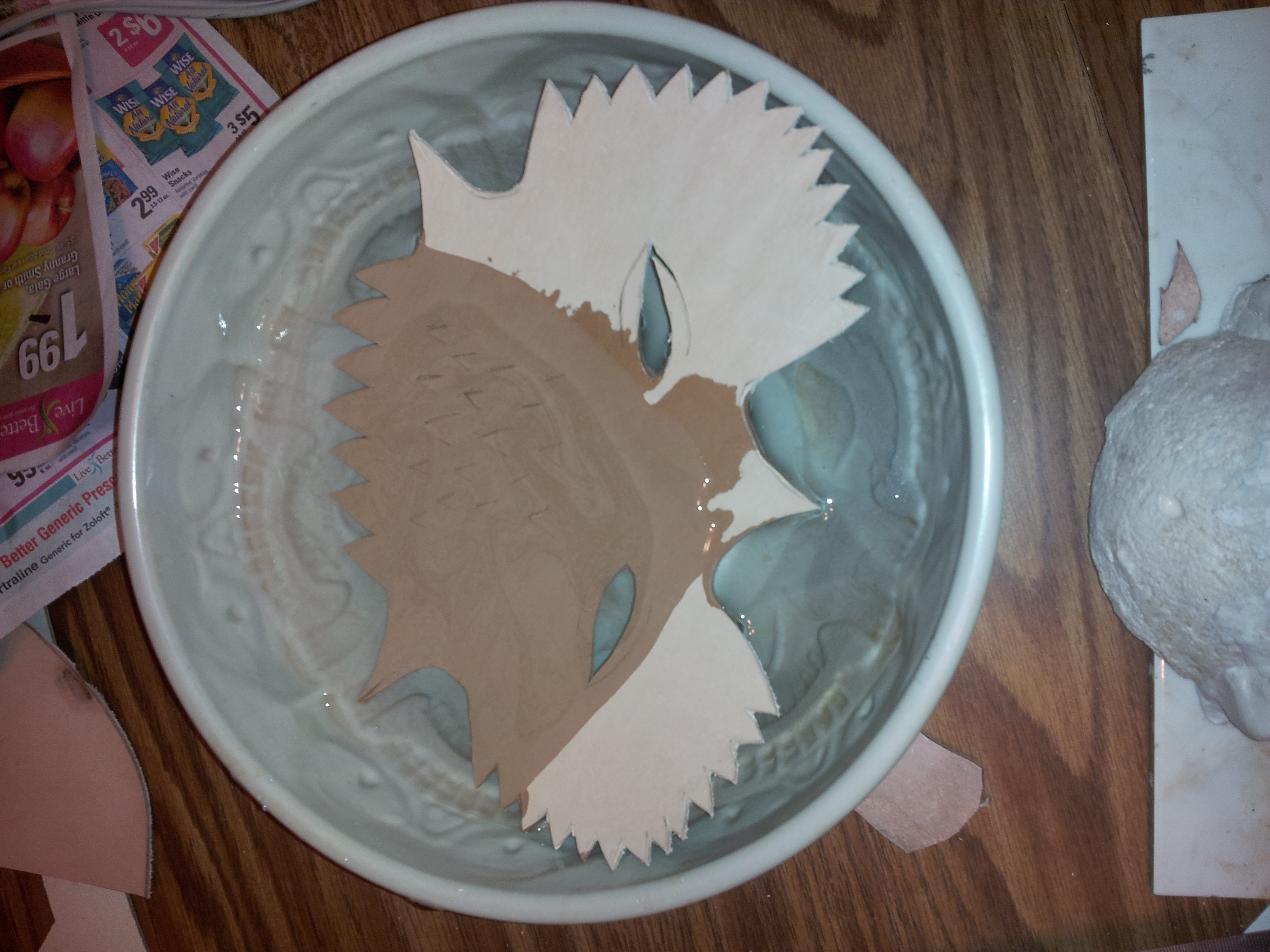
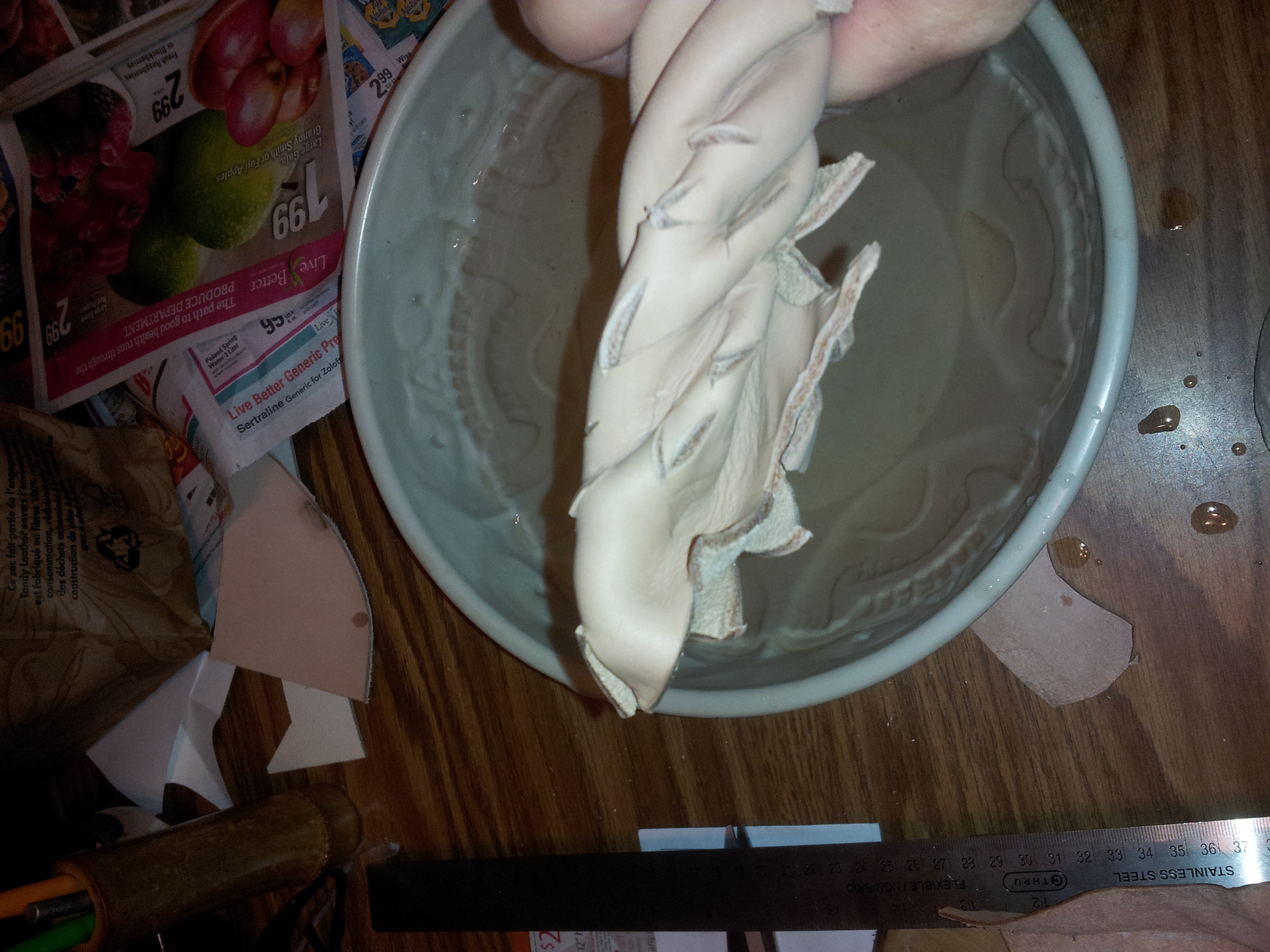
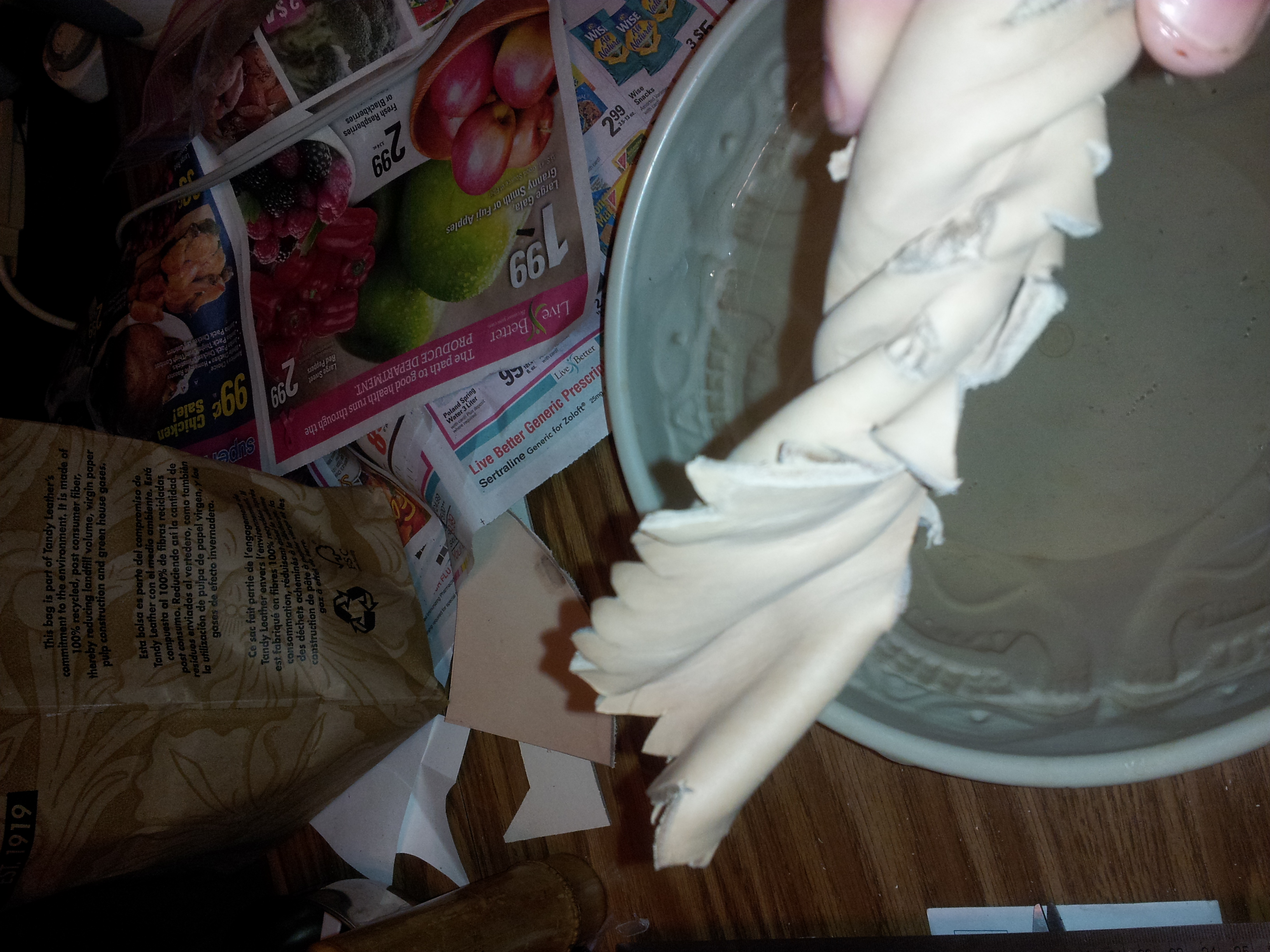
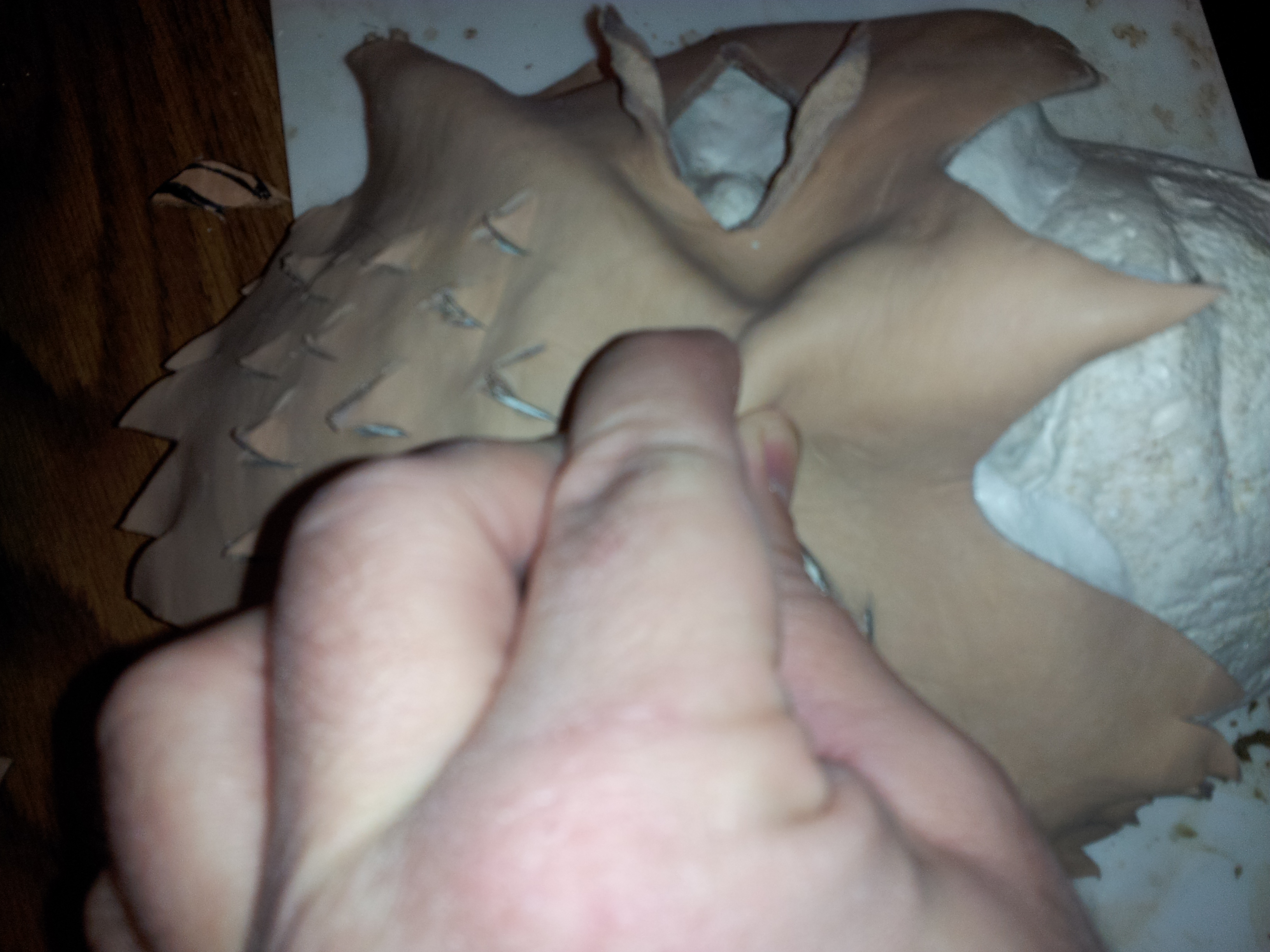
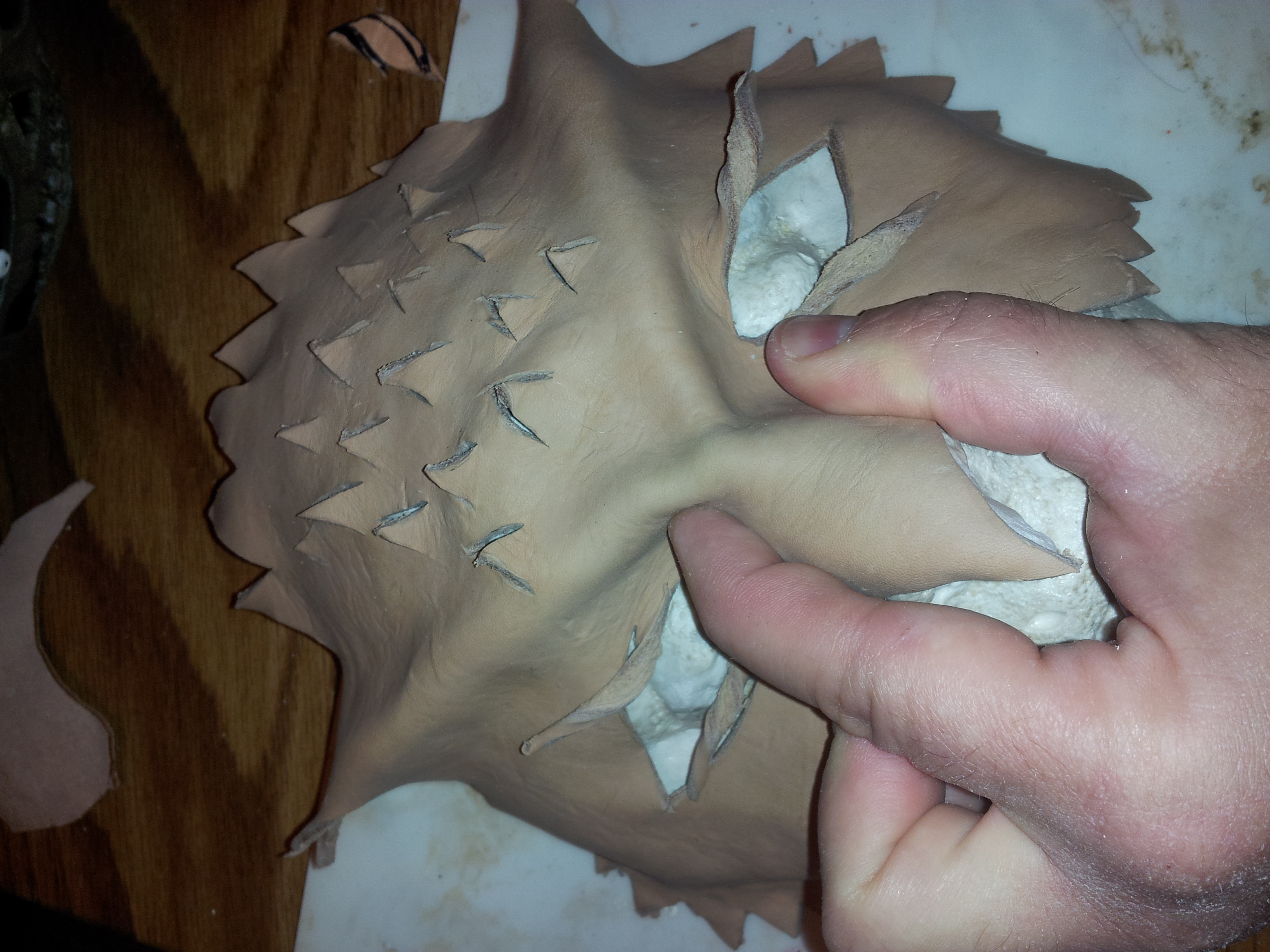
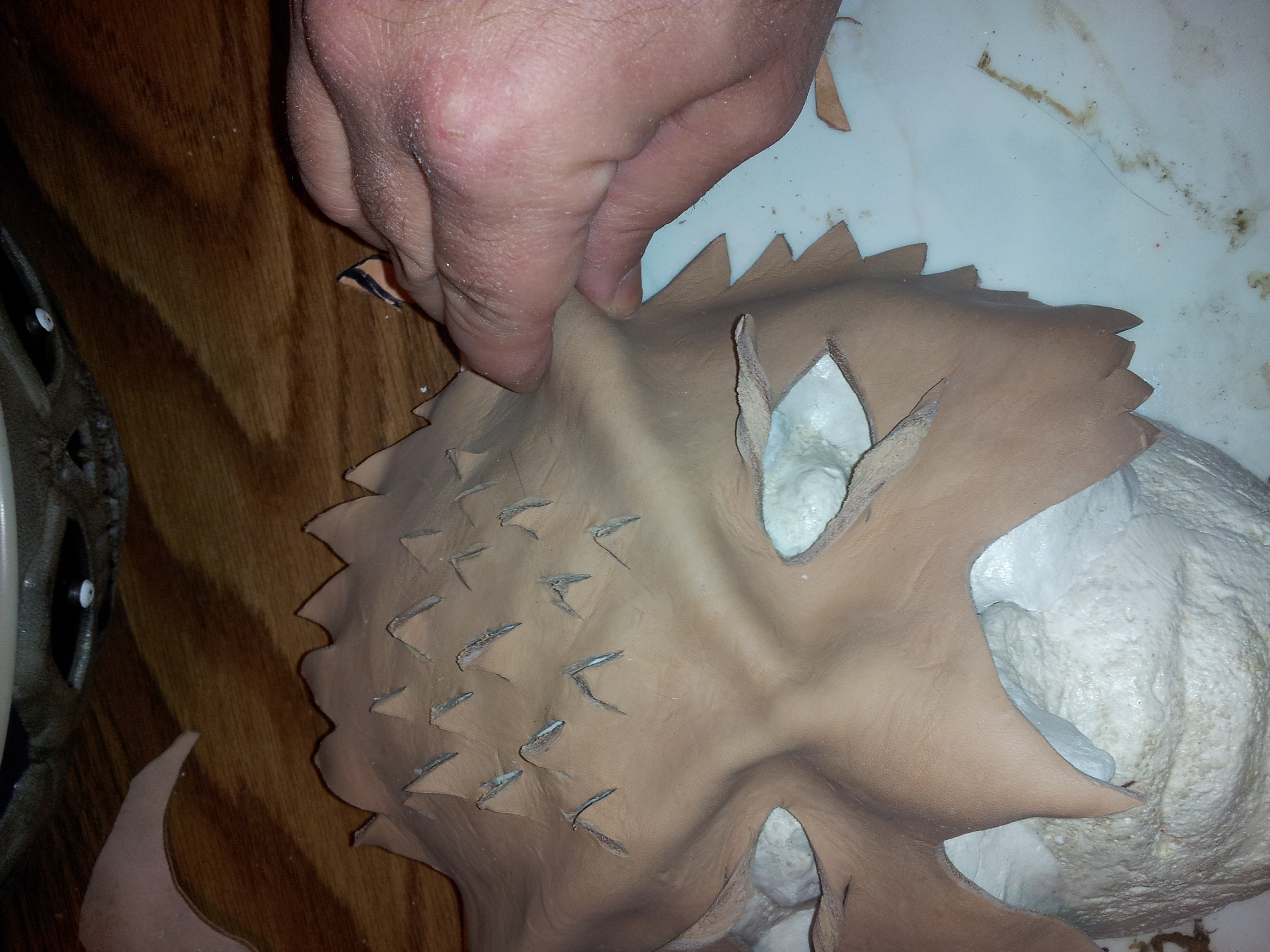
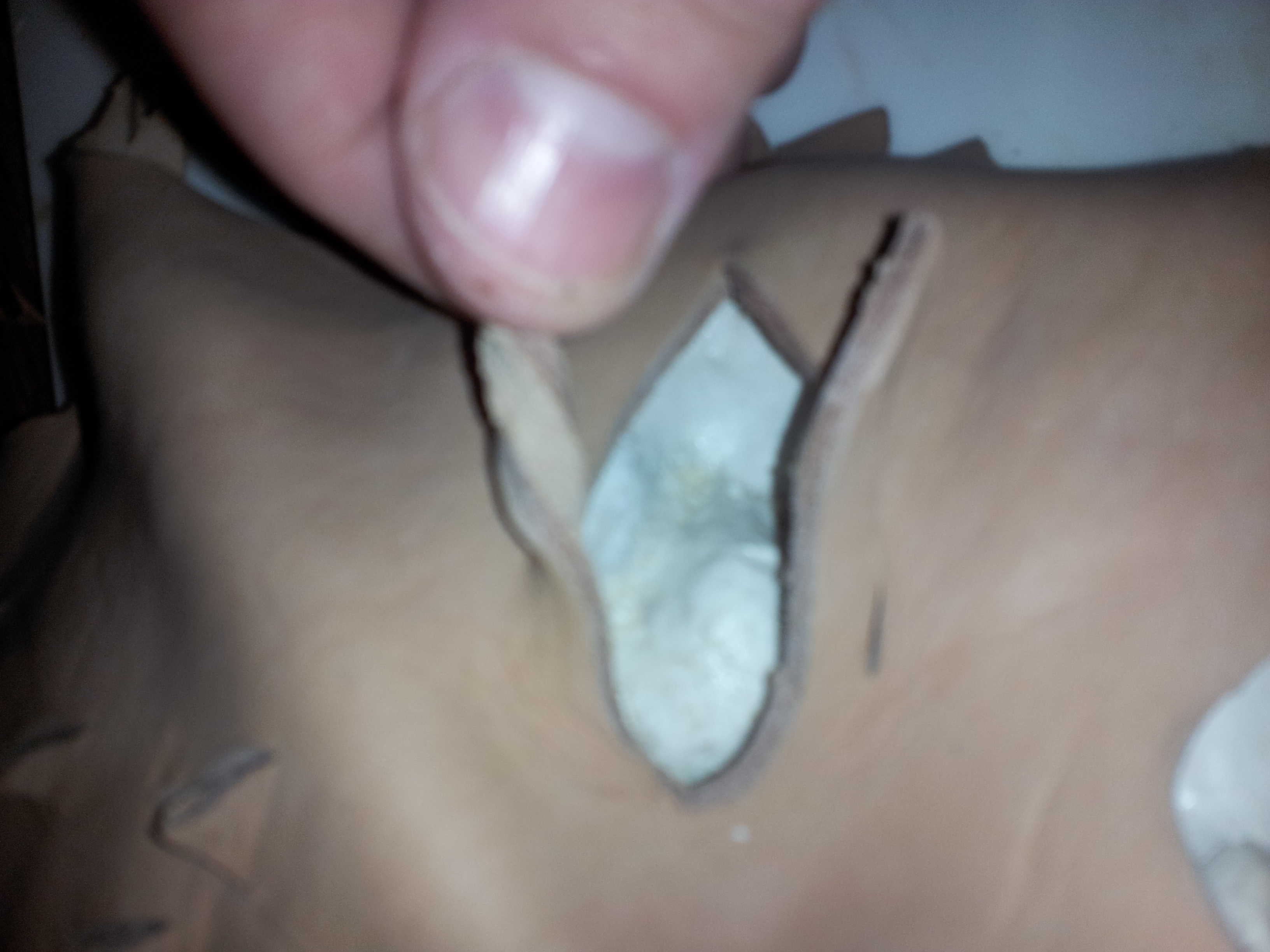
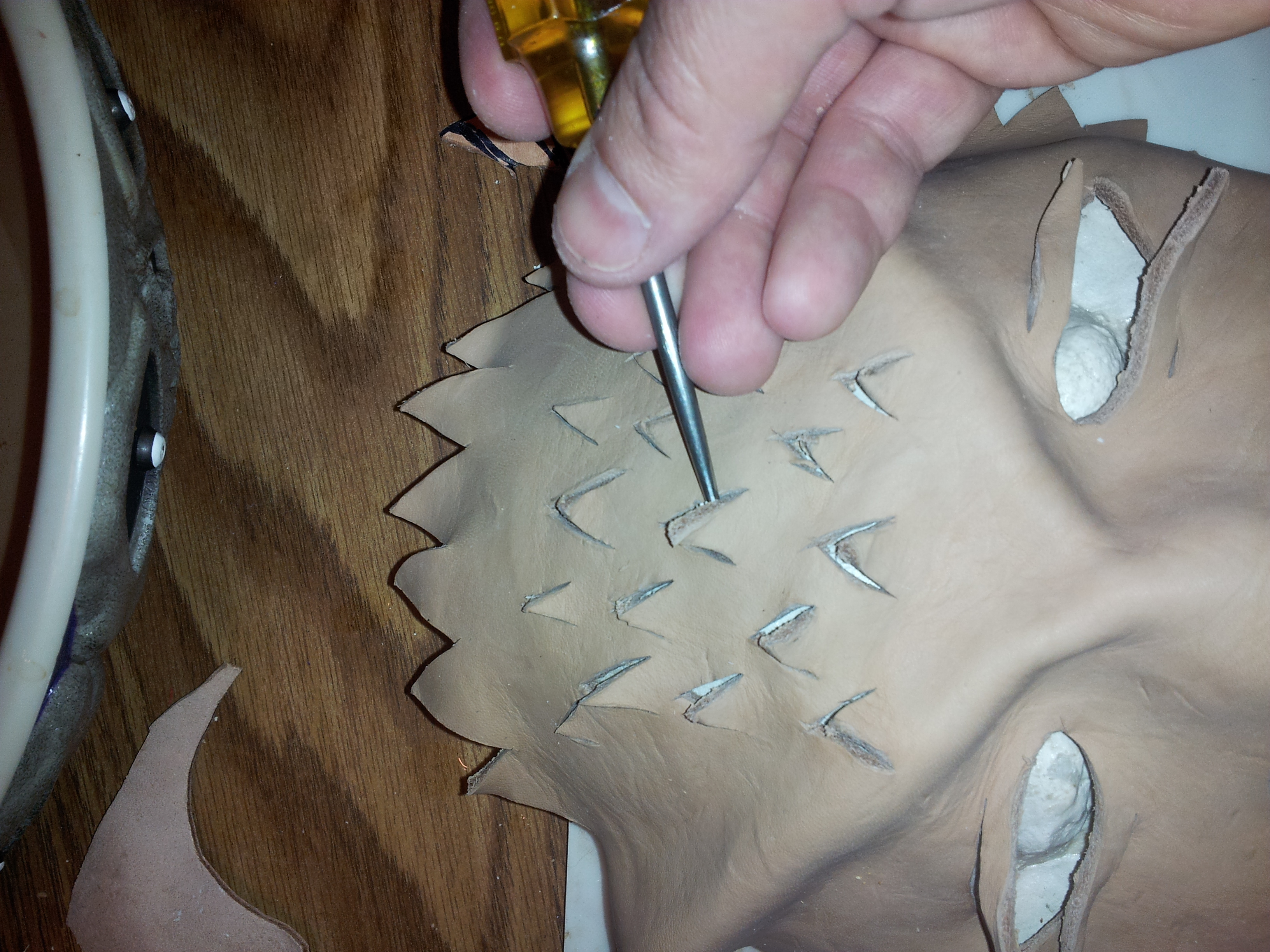
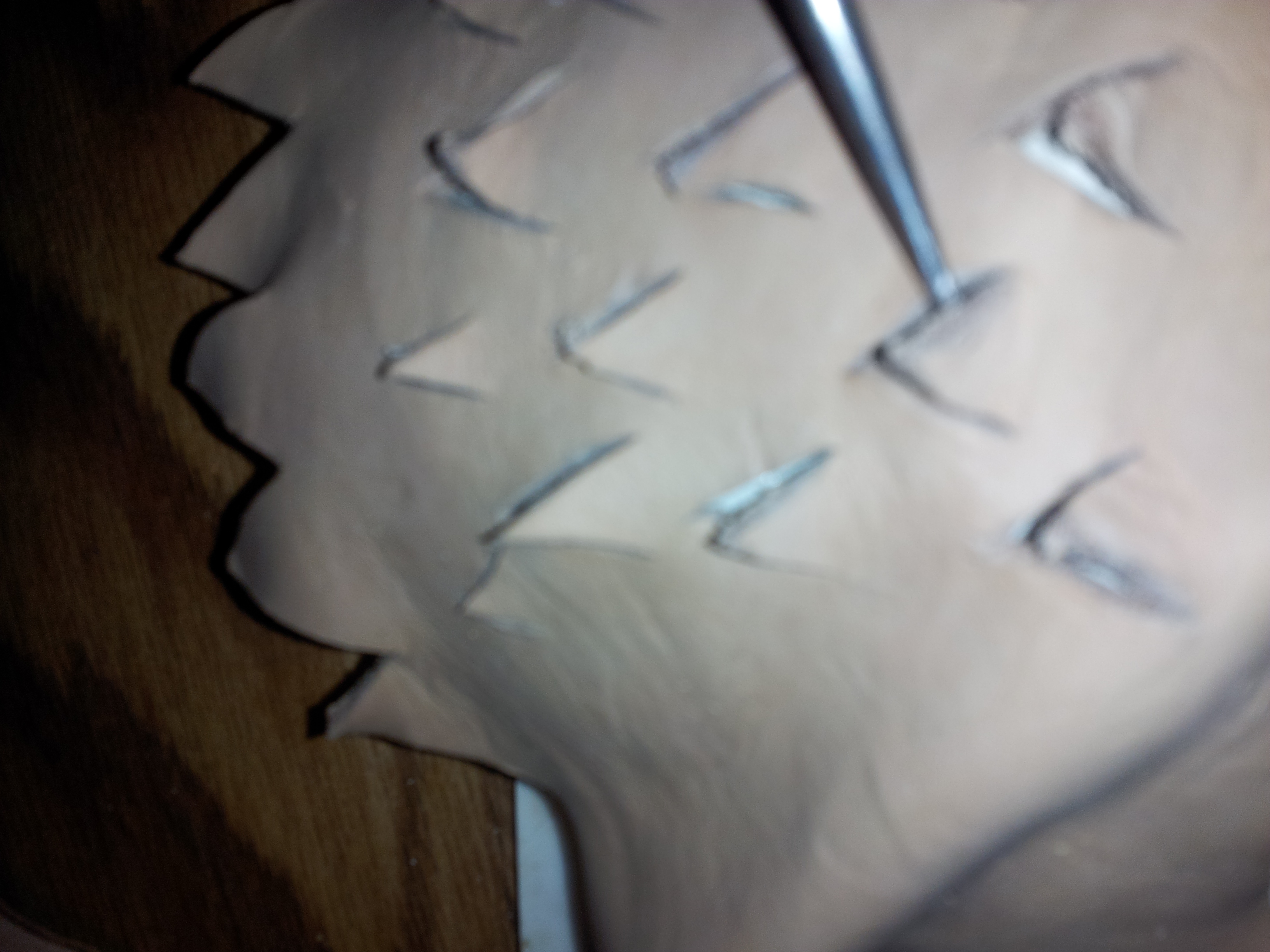
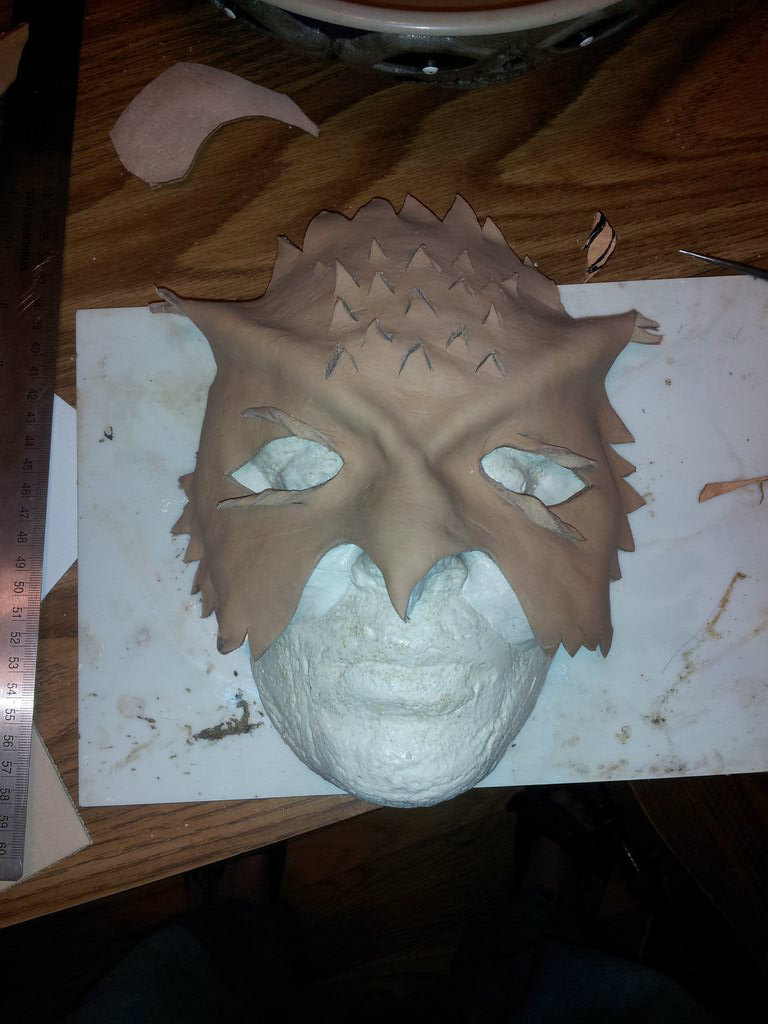
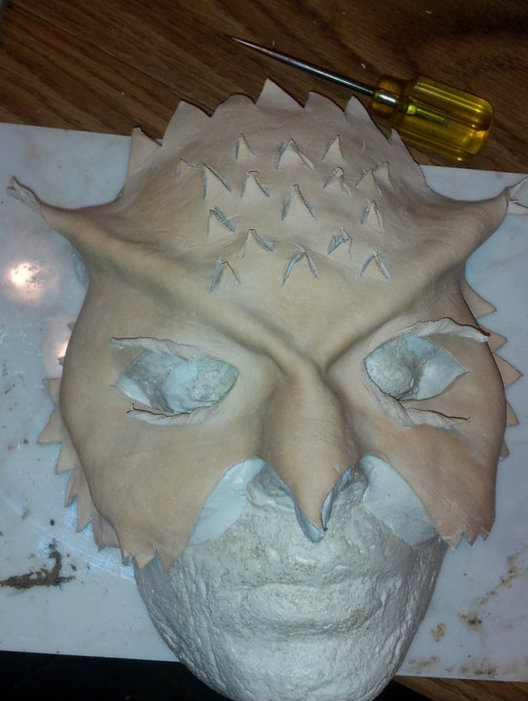
Soak the mask in lukewarm water for about 20-30 min.
Wring out the mask in one direction, then open it and wring it out in the other direction. Part of the reason for doing this is to get out the excess water, but this process also breaks a lot of the fibers of the leather, which will help you with your sculpting.
Place the mask on the mold and line up the eyes and the beak with those features on the mold.
Once again, pinch, fold, and press the leather into the mold to give shape to the mask. If you added the finer features, such as the eyebrow or the feathers on the head, twist and raise those to give them the definition.
Remember, you will need to sculpt a little, let it dry, and then sculpt some more. This process takes time, but the more you do it, the more defined the mask will become.
Dye and Paint the Mask
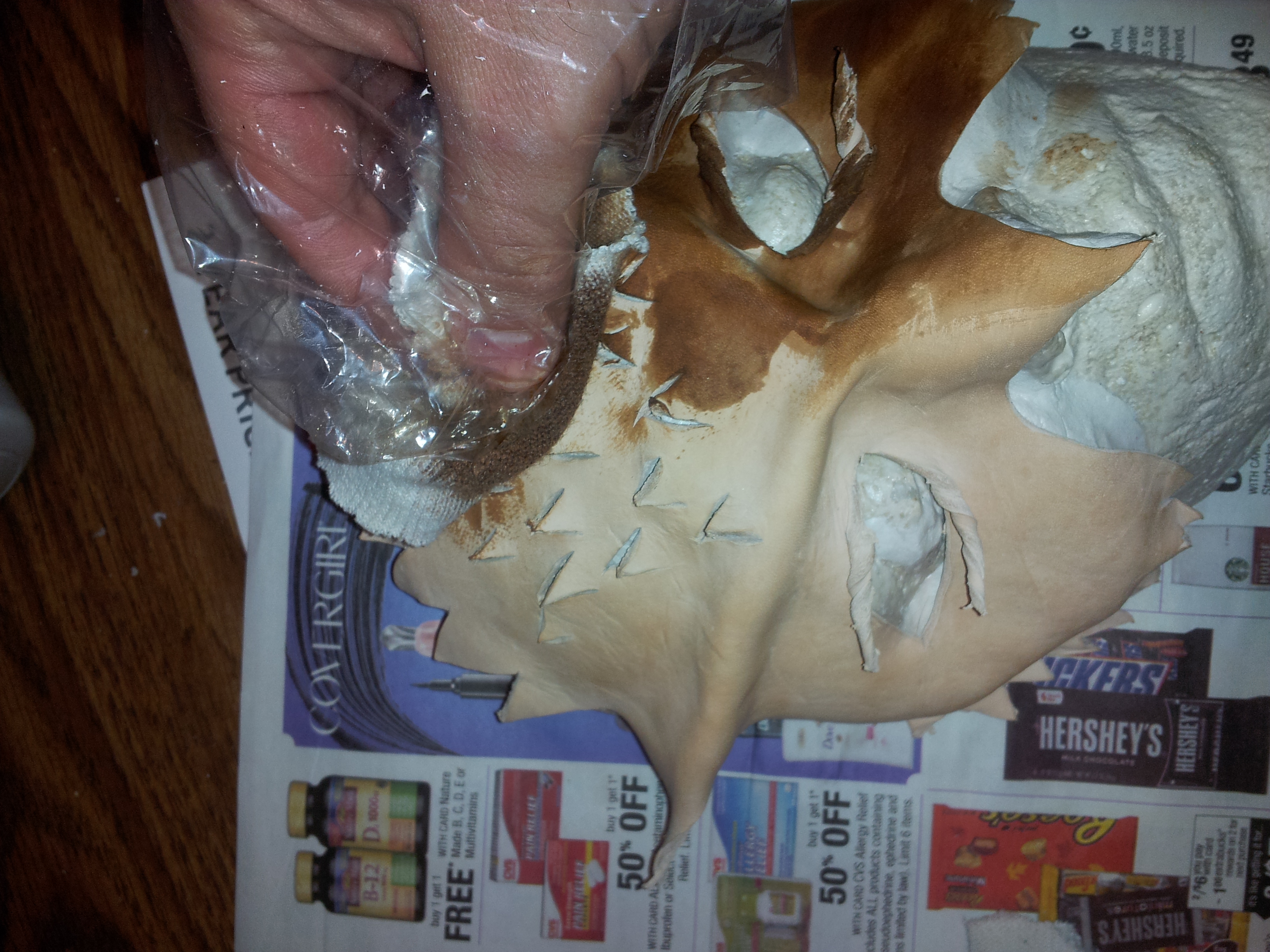
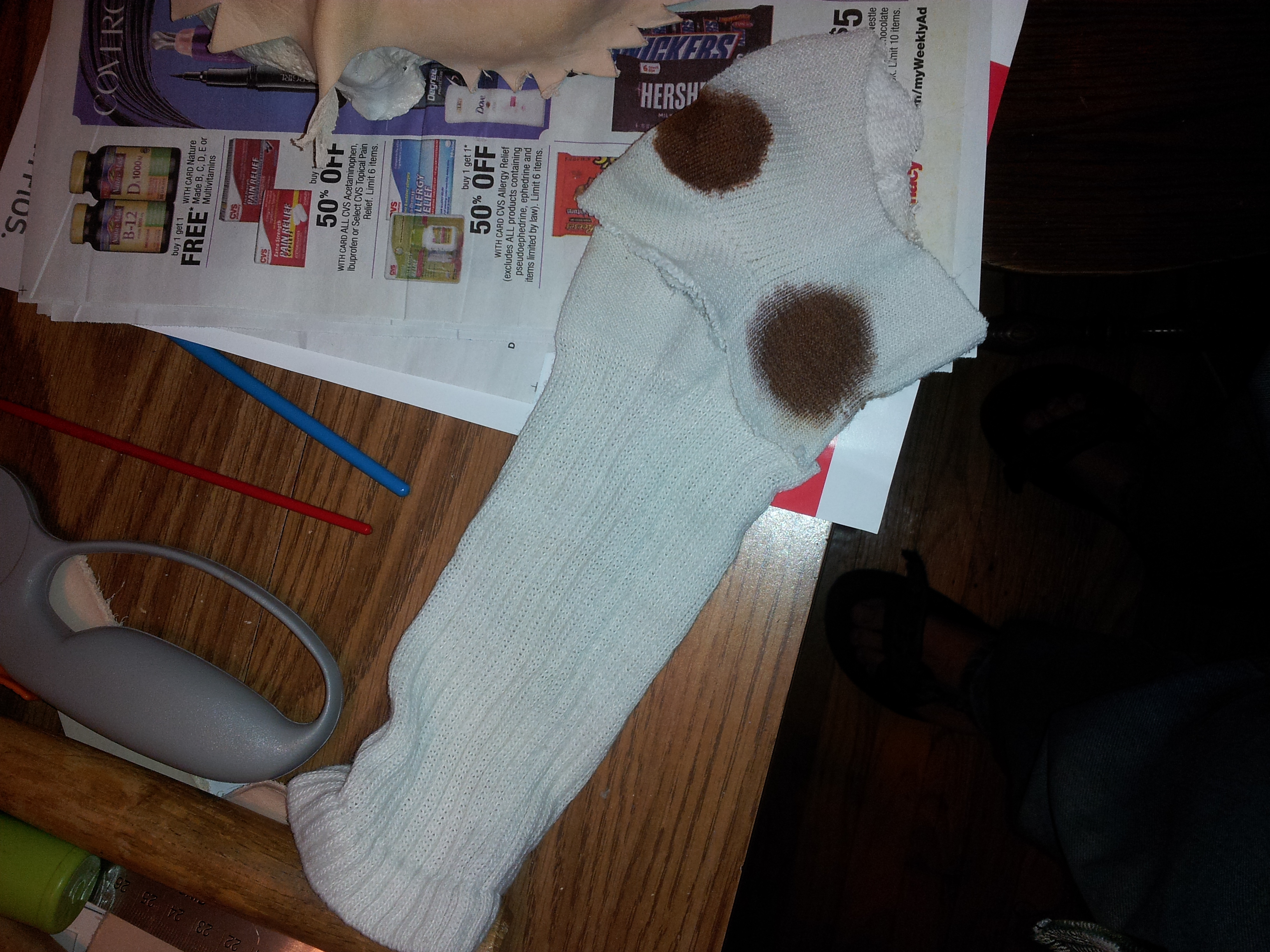
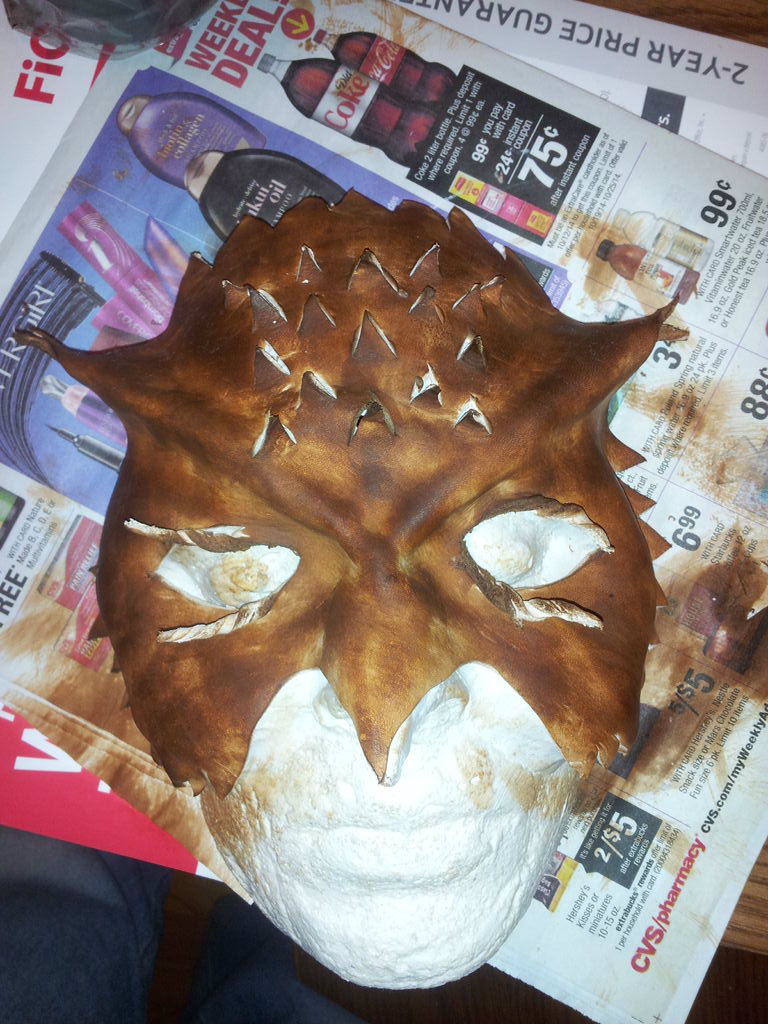
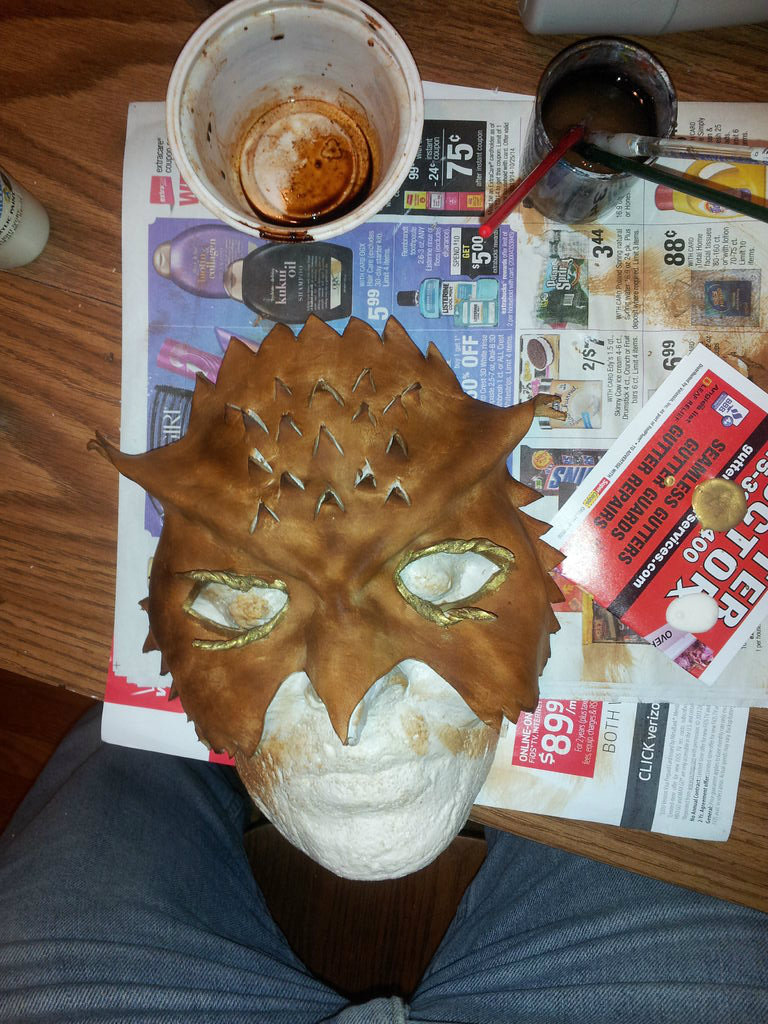
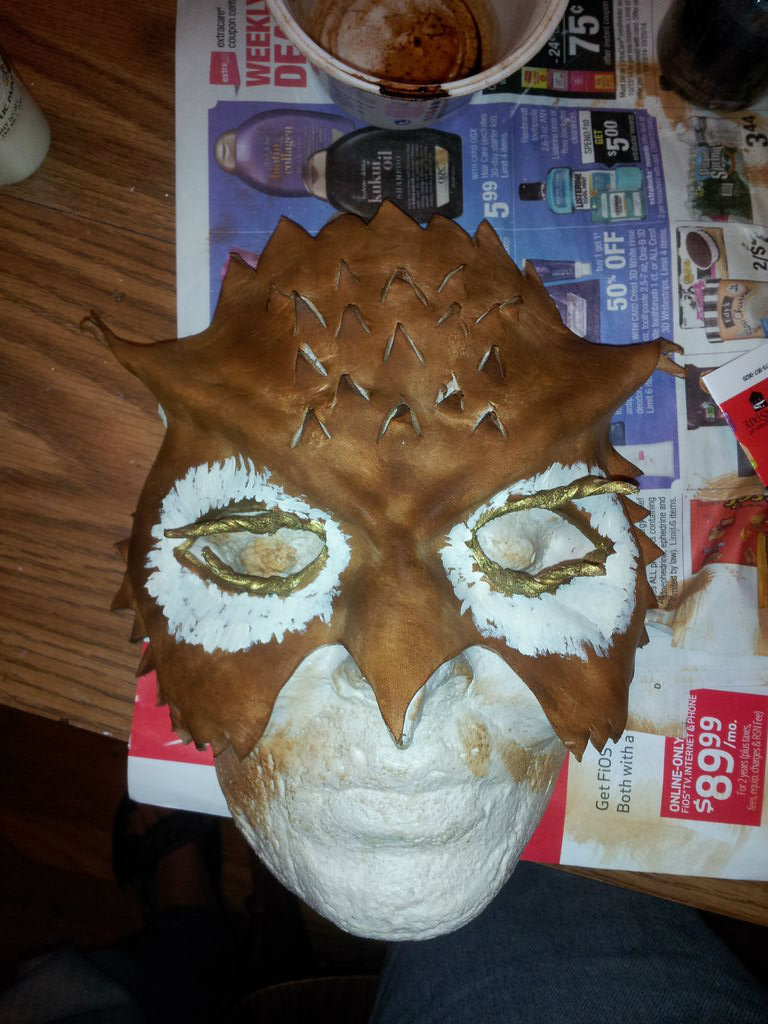
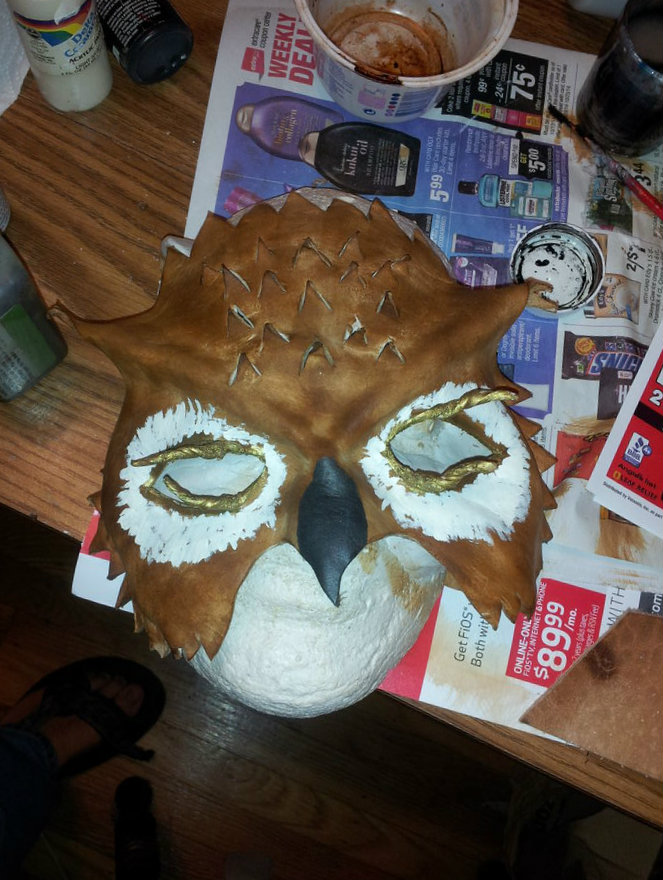
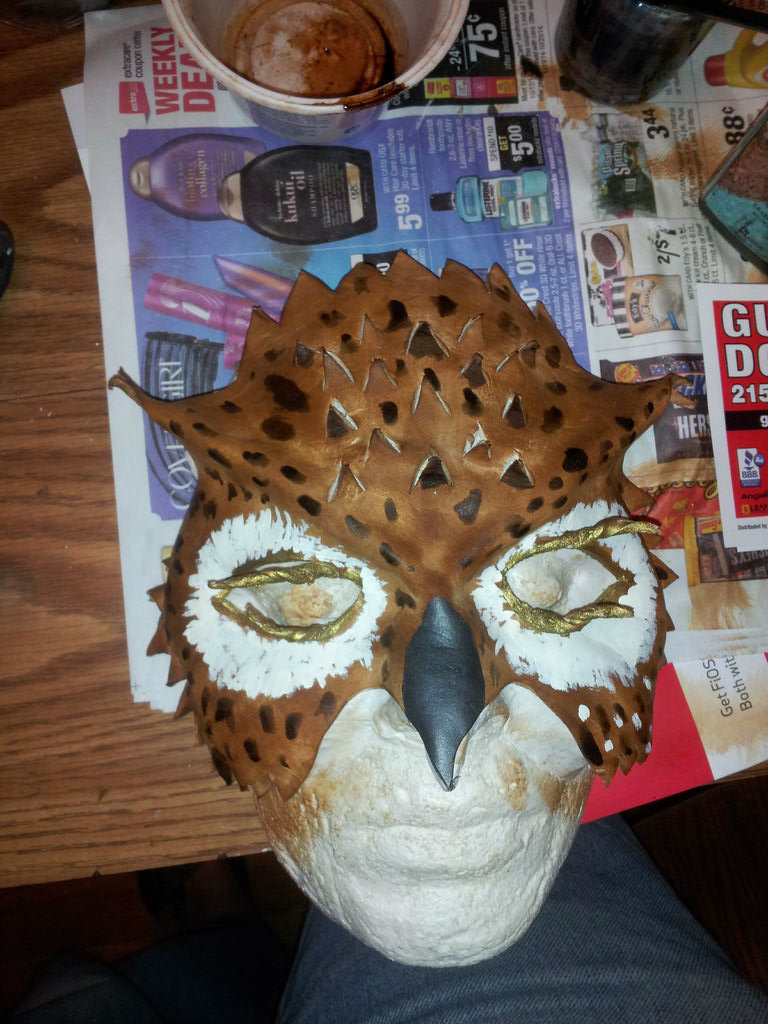
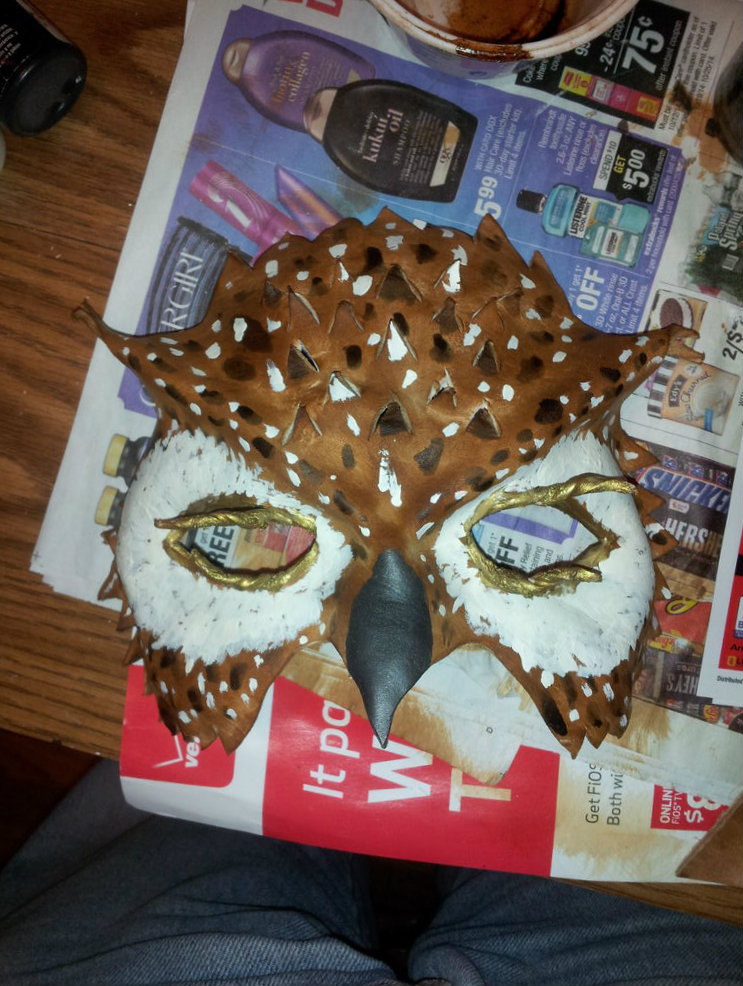
Begin by applying the base coat of leather dye. I used the timber brown. To get a nice even coat, you can use a moist sponge, a paper towel, or recycle an old sock with holes.
After you have the base color applied, begin by adding the details. I started with the a gold outline on the eyes and the painted the eyelashes gold as well.
Next, develop the face disc. I used a smaller brush and used short strokes radiating away from the eyes to create a feathered effect.
Finally, I added the bison brown and white patches to replicate the camouflage feather pattern you see in many owls.
Seal the Leather
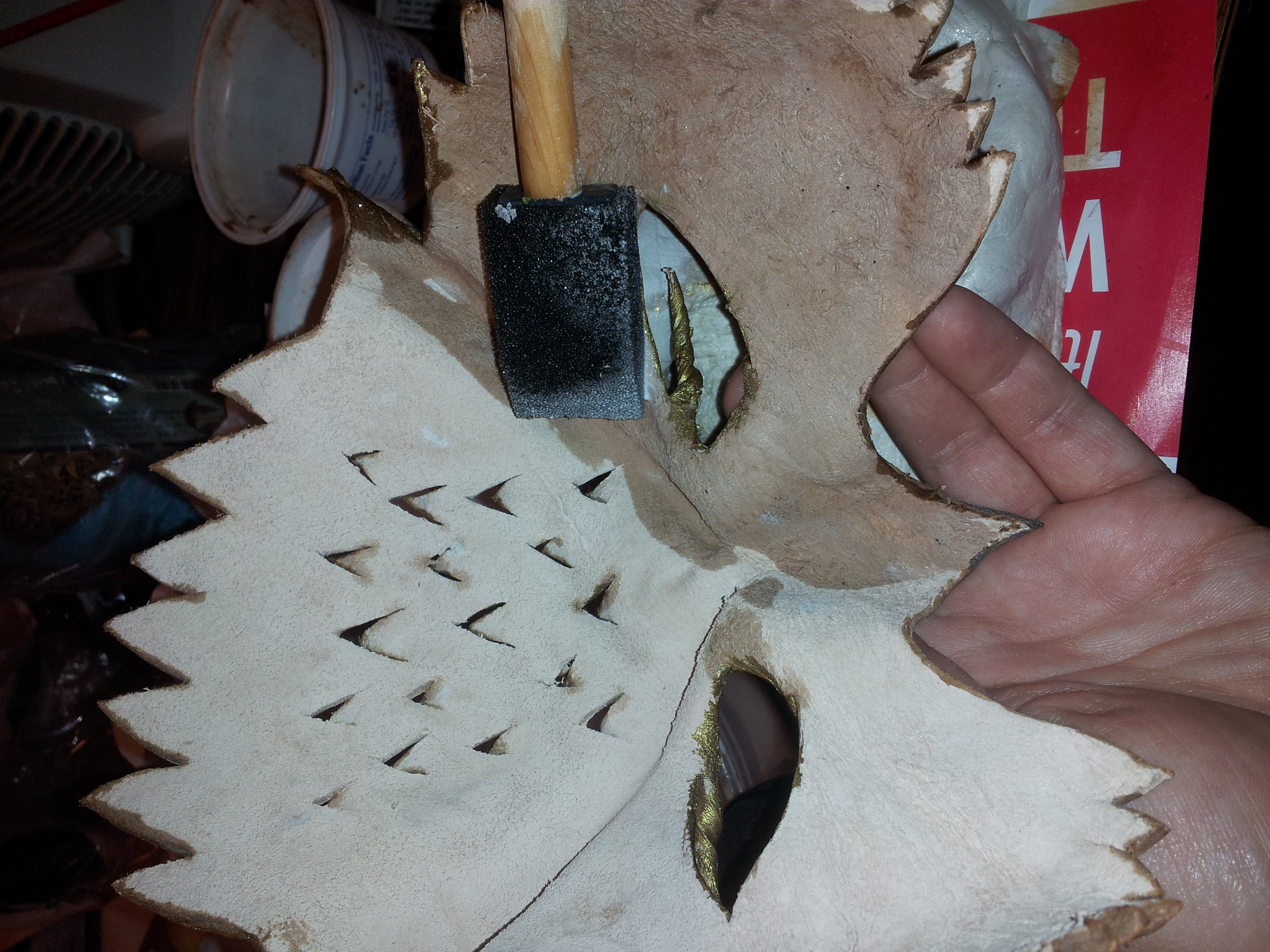
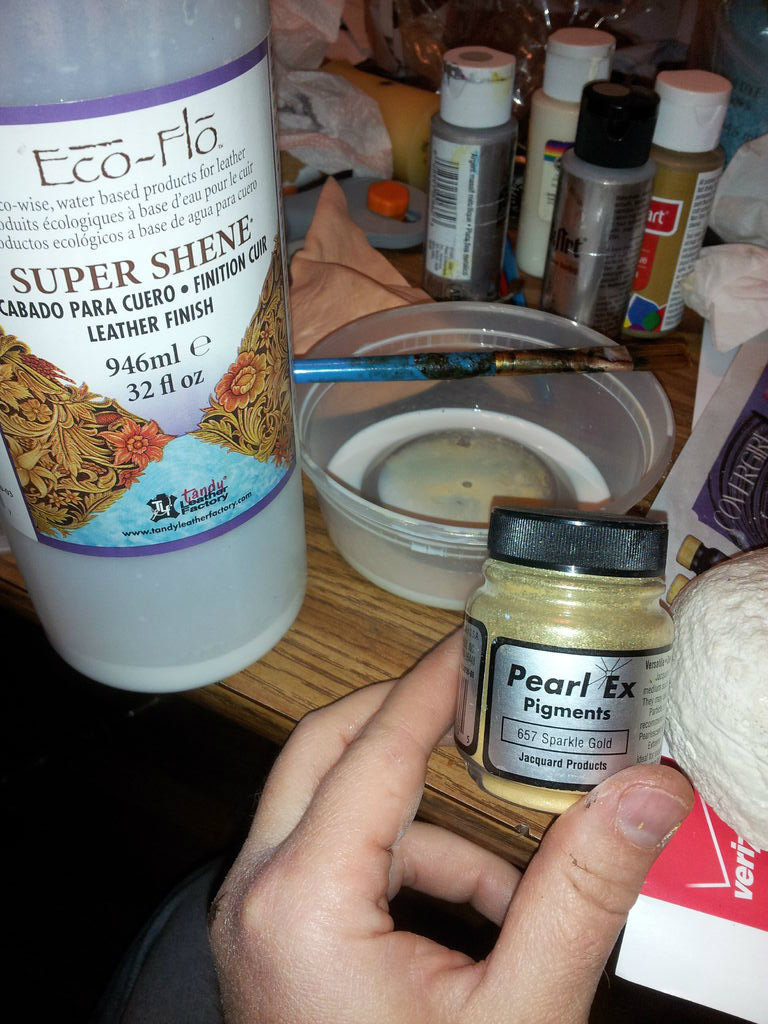
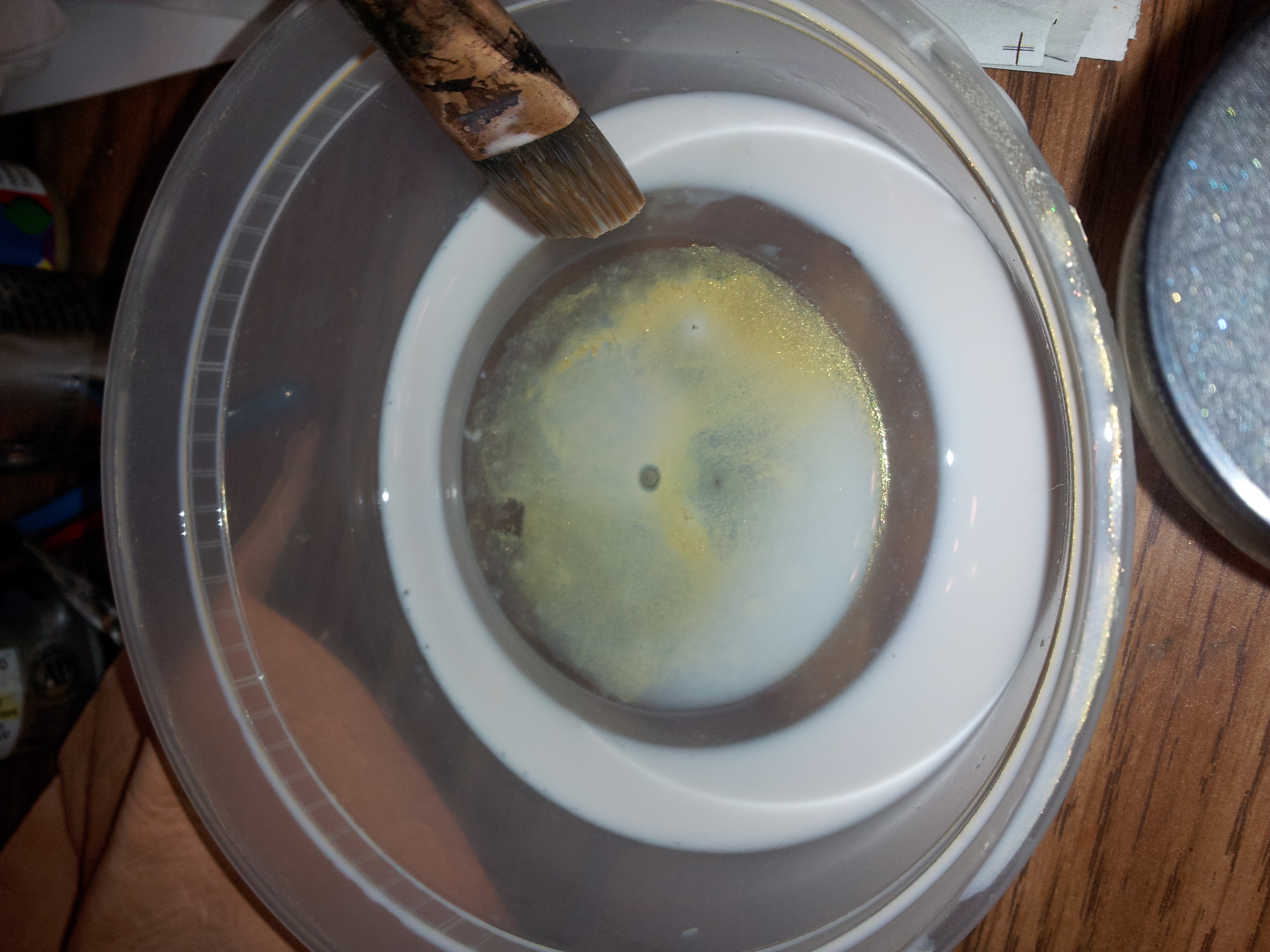
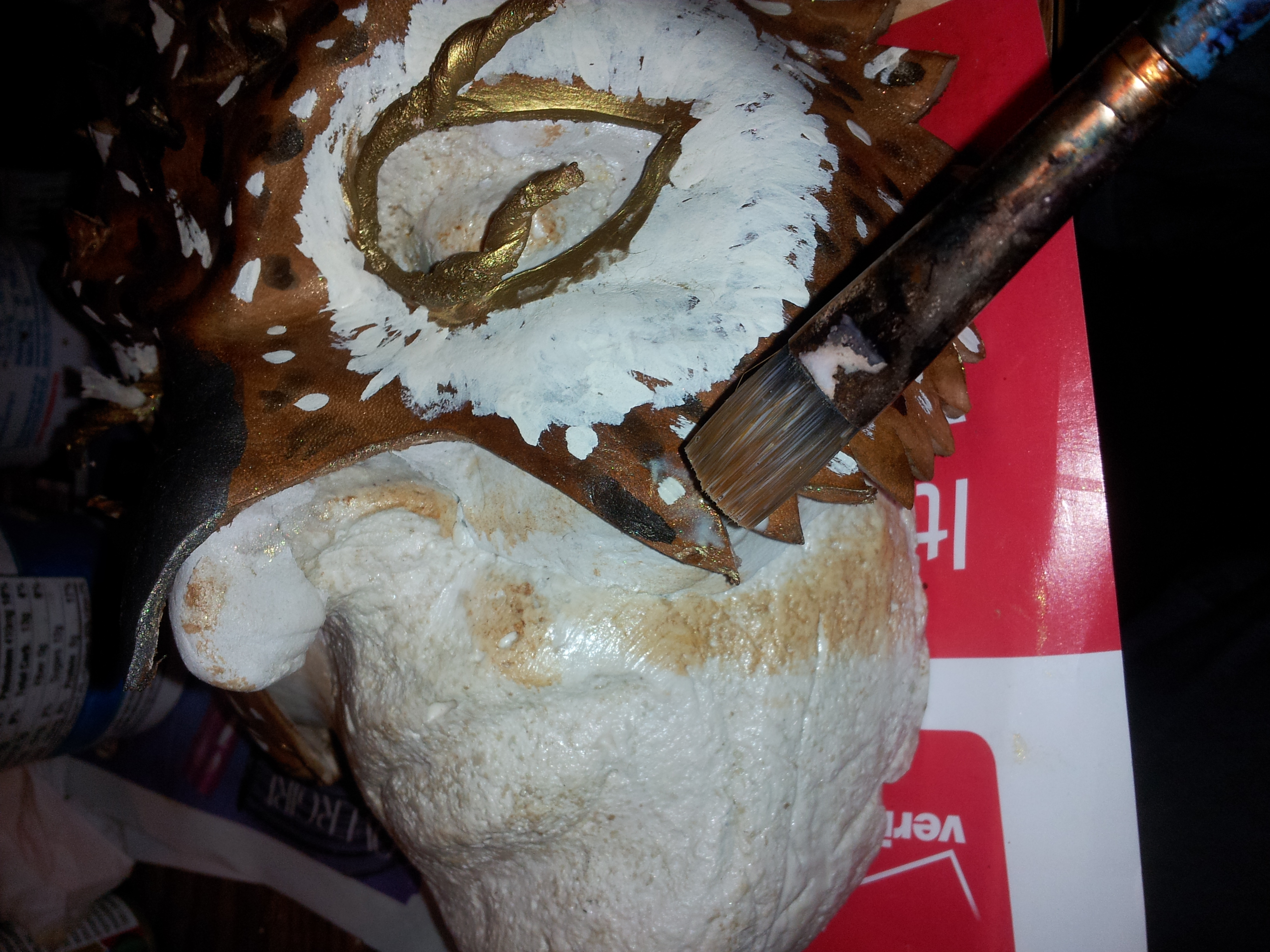
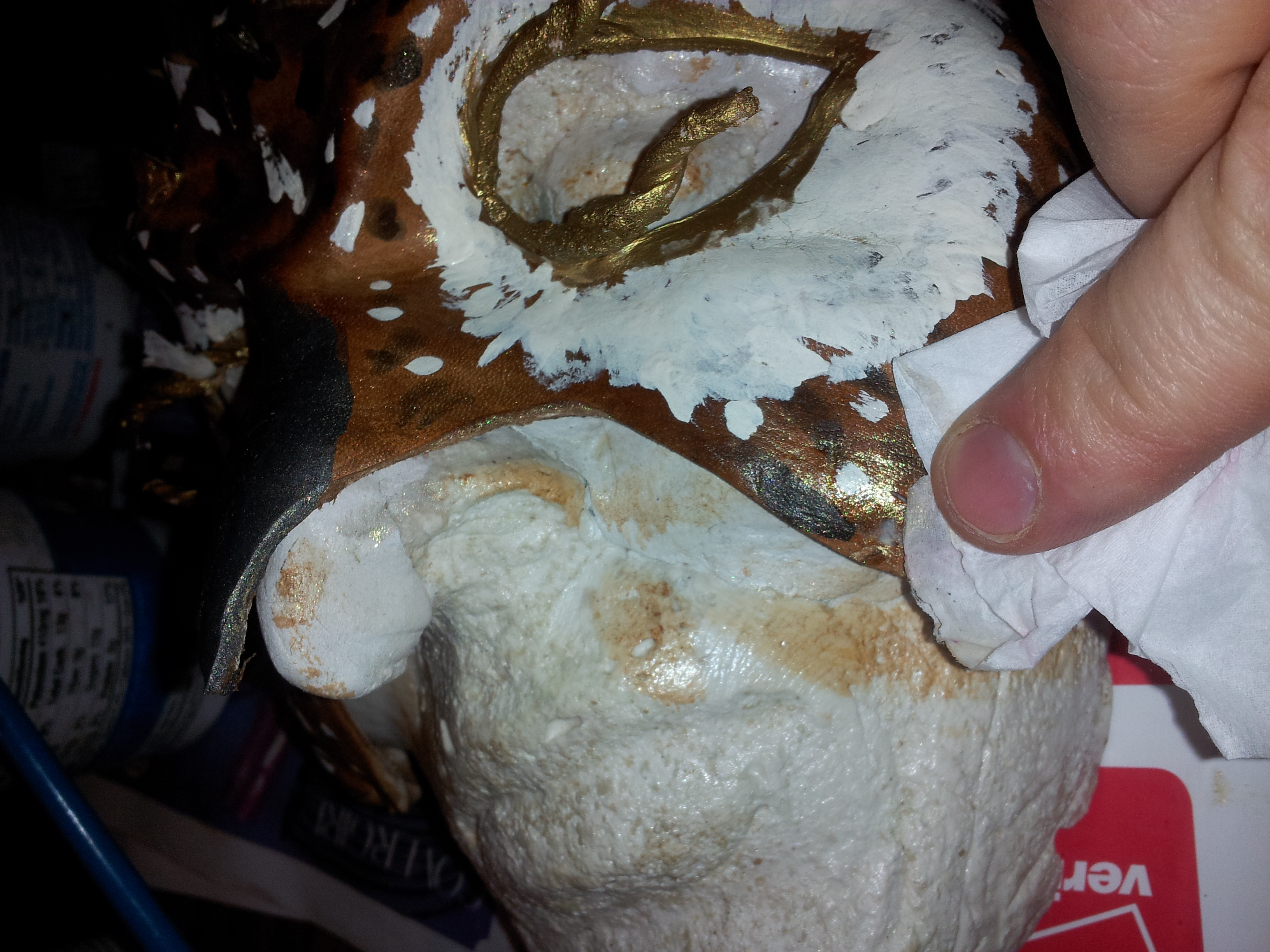
To seal the inside of the mask, I used the Eco-Flo Super Shene. I applied it with a sponge and just let it soak in.
For the outside of the mask, I decided to give it a little extra sparkle by adding gold Pearl Ex powder to the Super Shene. If you decide to try this, start with small amounts of the Pearl Ex and test the mix on a piece of scrap leather. If the seal gives you the effect you want, use that mix. If you want more sparkle, slowly add more powder until you reach the level of gold shine you want.
Apply the sealant to the outside of the mask, let it sit for a few seconds and then wipe off the excess.
Add the Ties
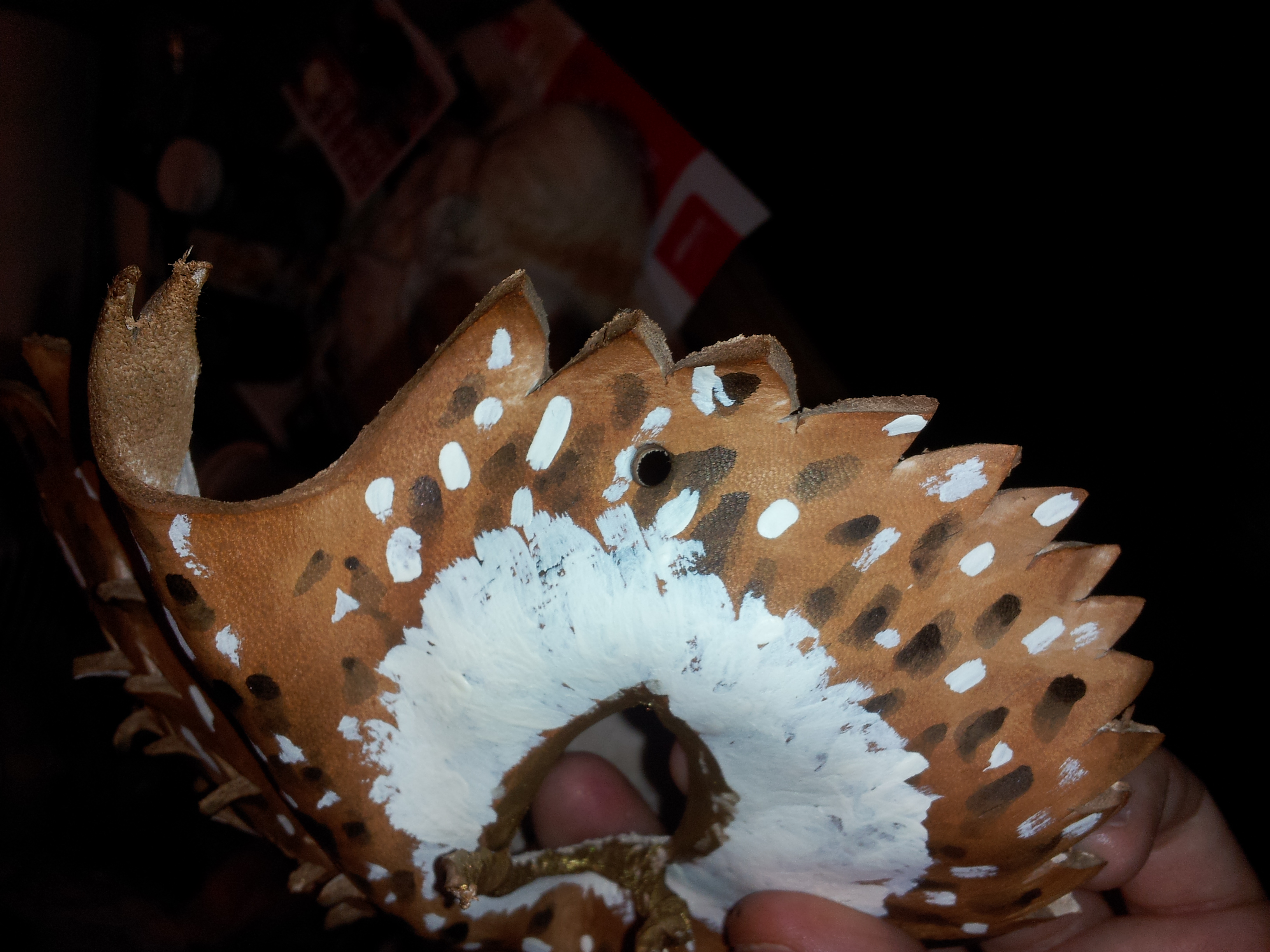
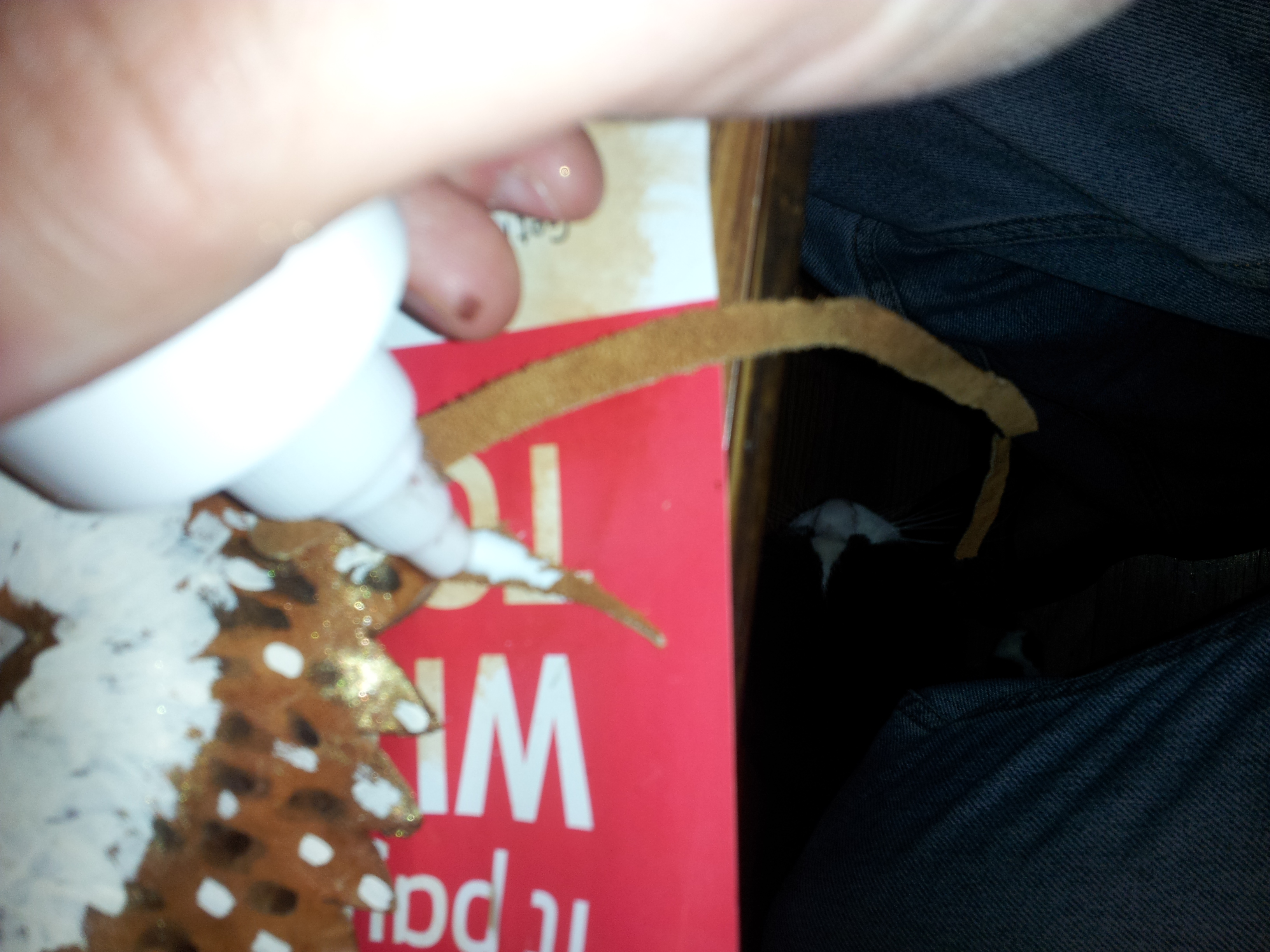
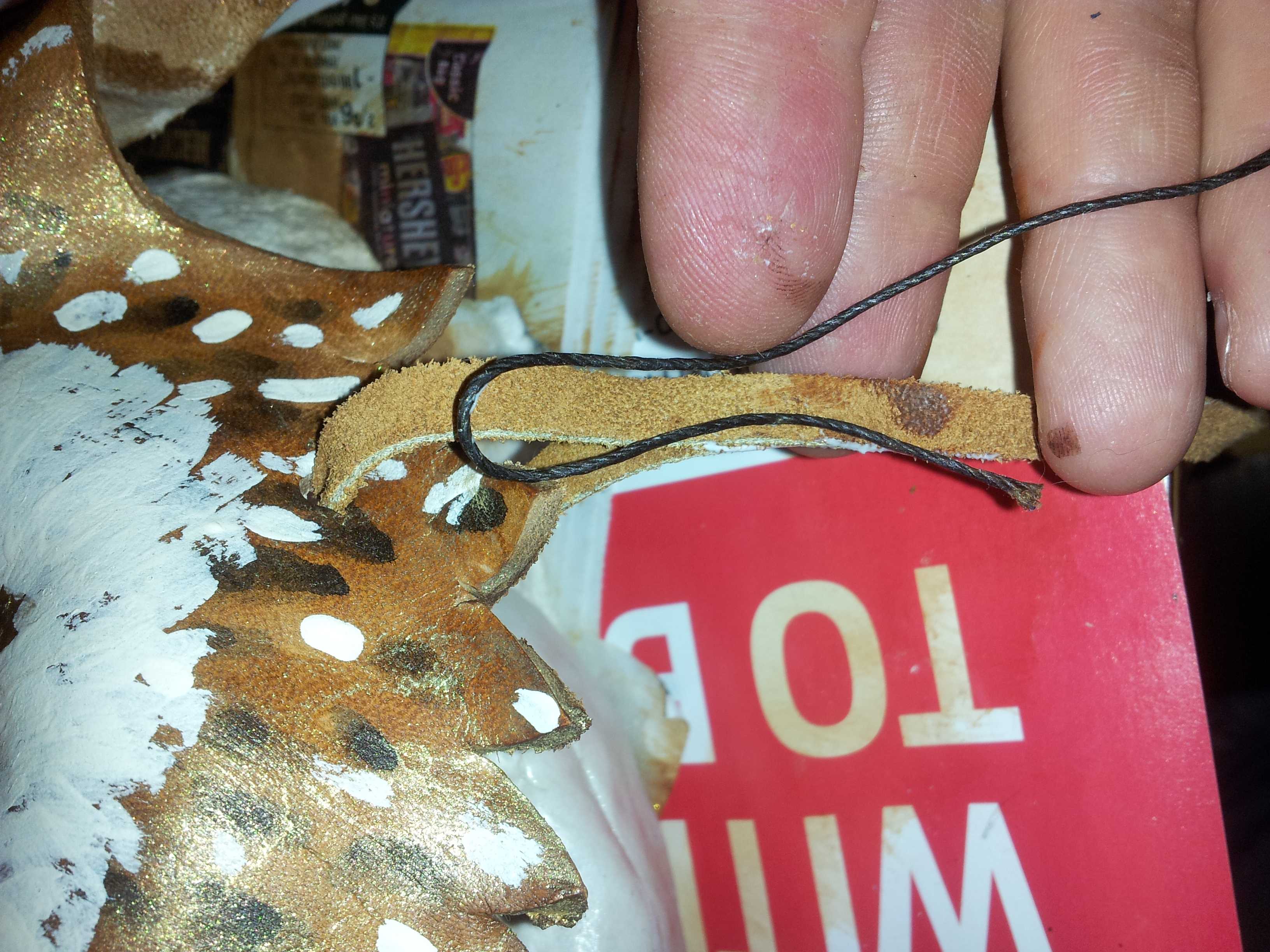
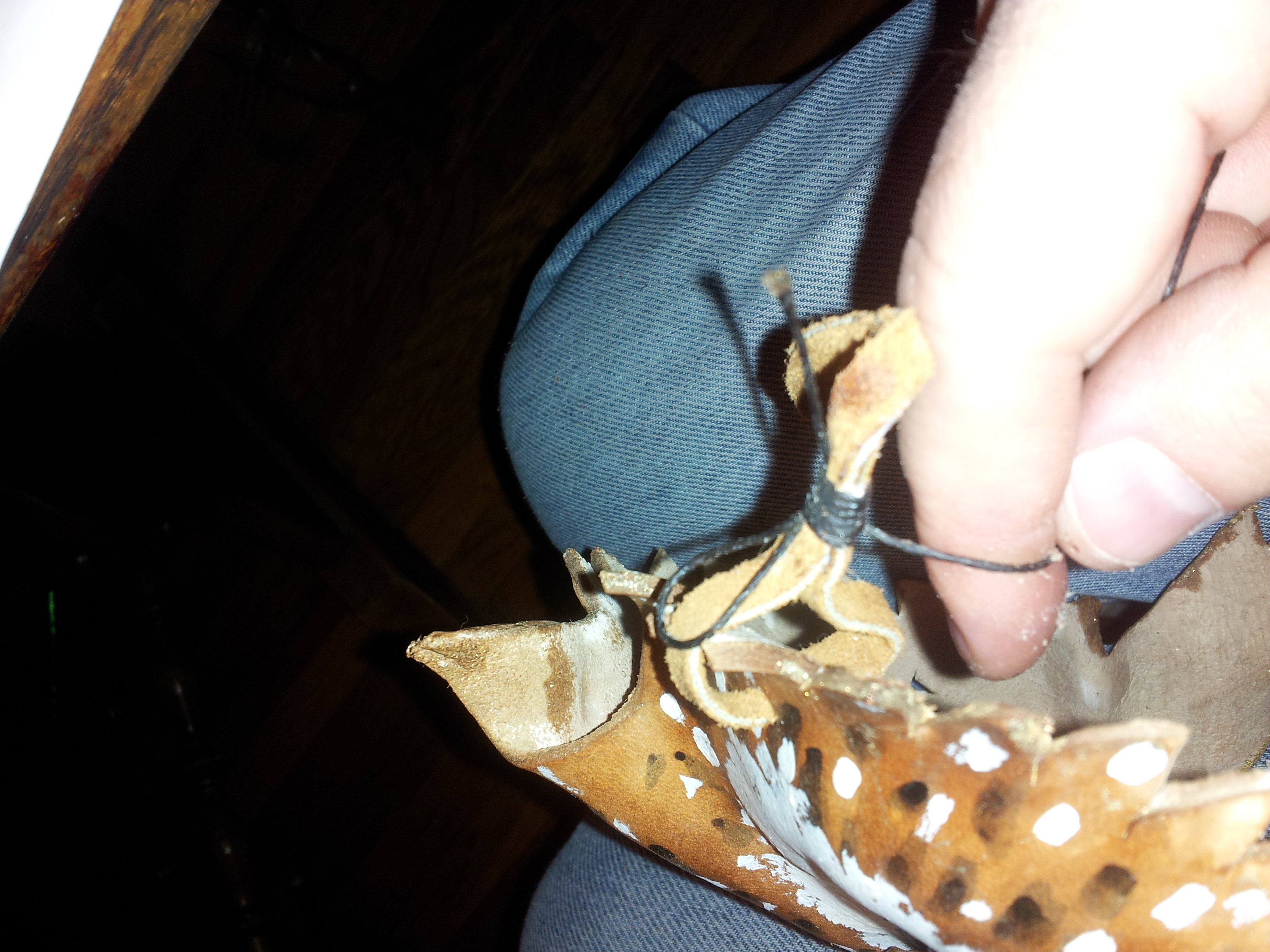
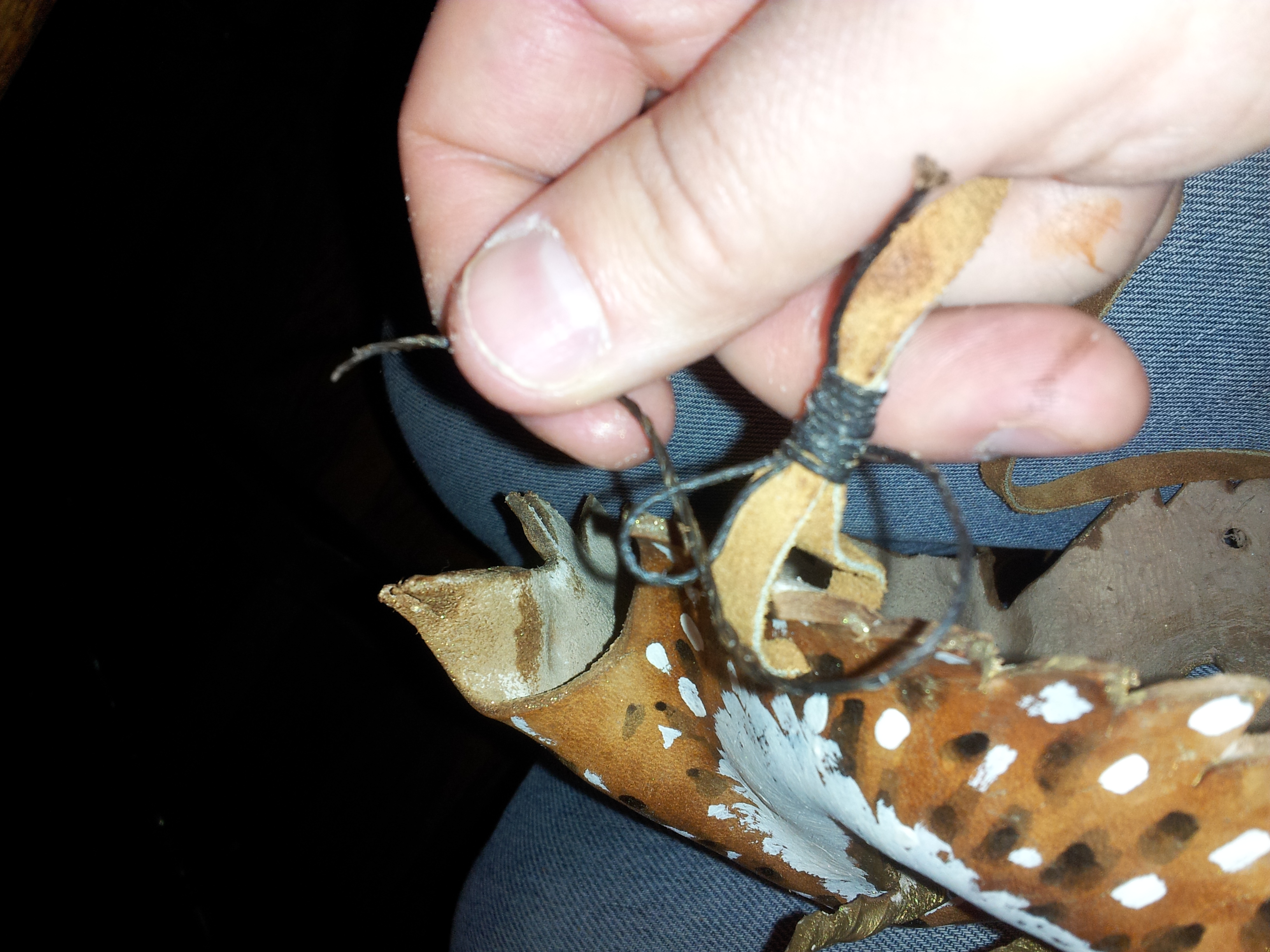

The best place to put the holes for the ties is about 1/2" from the edge of the mask in line with the eyes. Use the hole punch to make these holes
Run the 2 pieces of 15" leather lace through each of these holes. On each of these pieces of lace, add a bit of glue to hold the end of the lace to the where it loops around.
Take about 6-8" of the waxed leather thread, and create a 1" loop and hold it against the lace. Then, use the other end of the thread and wrap it around the folded over lace and the loop of thread, moving from the bottom of the loop to the top, and leaving a the tail of the loop sticking out. When you run out of thread on the wrapping end, stick that end though the loop, then pull the tail end of the loop. This will pull the loop under the wrapping, trapping the free end.
Or you could just tie a knot, but that is far less elegant.
Take Pride in Your Work
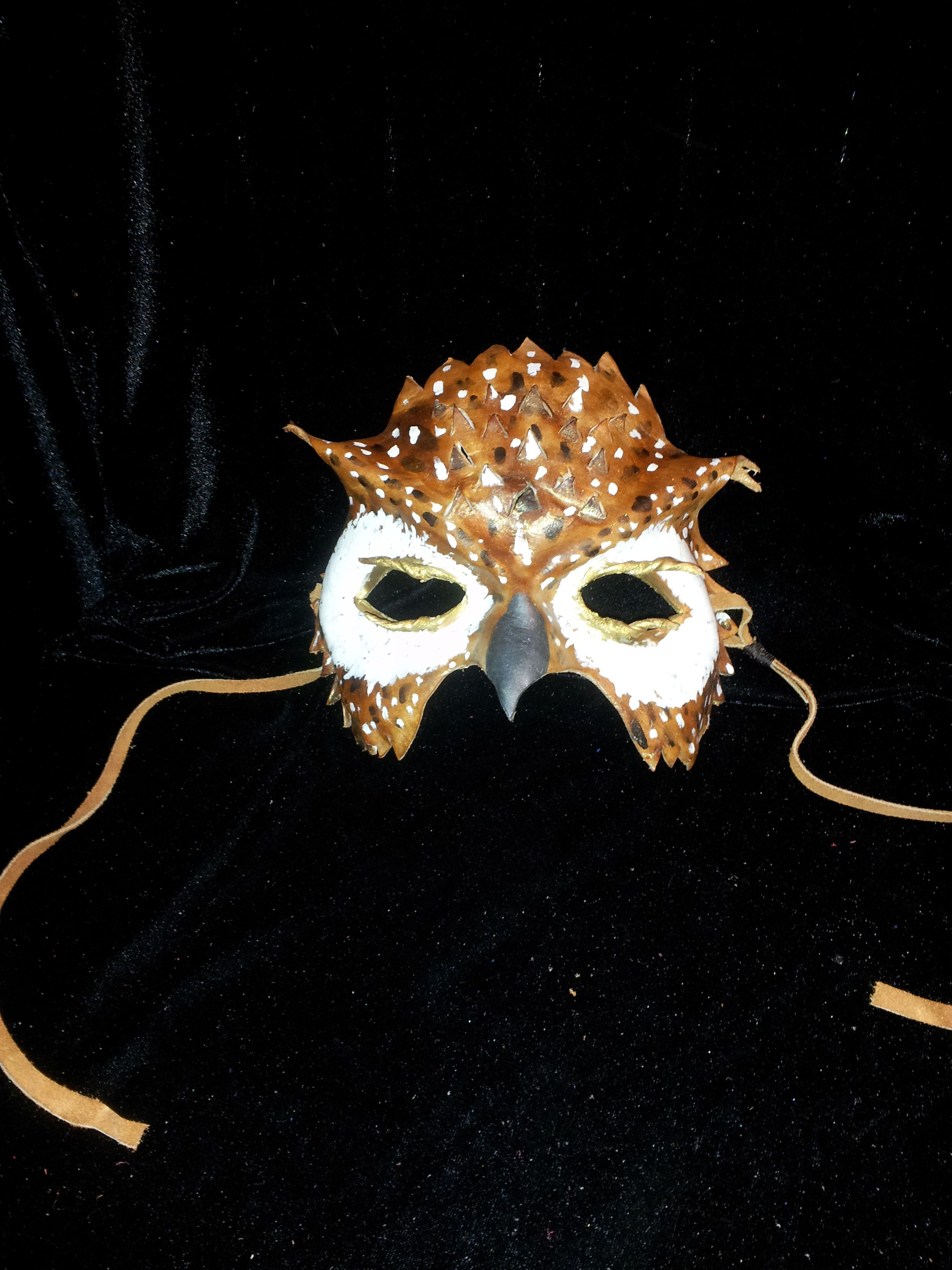
Congratulations!
You have finished your owl mask.
This process can be used to design any other mask you might want to create as well.
And trust me, once you start playing with leather mask making, it becomes addicting.